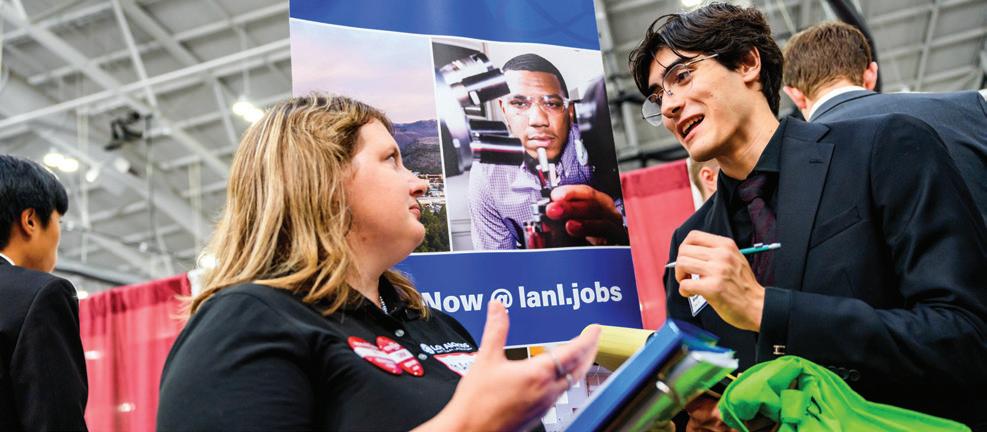
TRAILBLAZERS

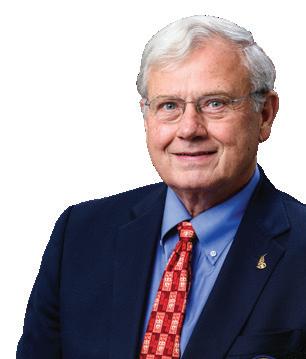
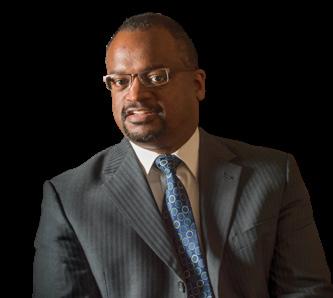
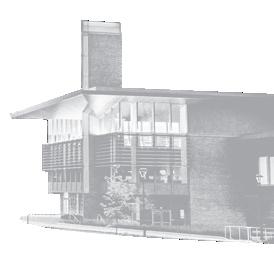
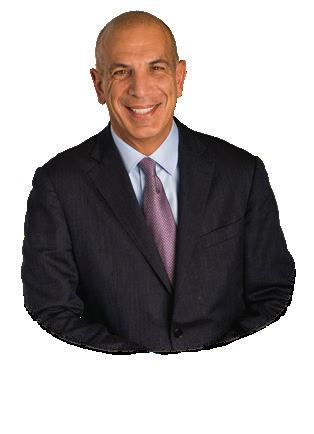







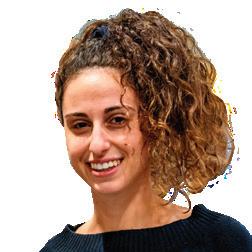
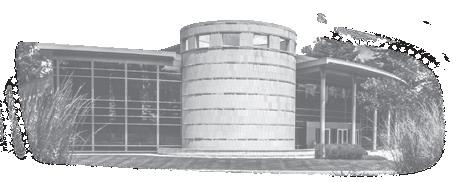
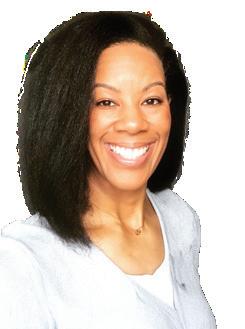
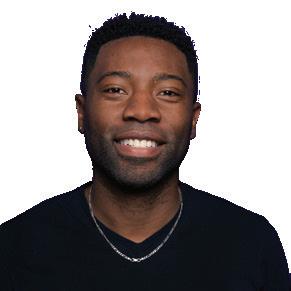

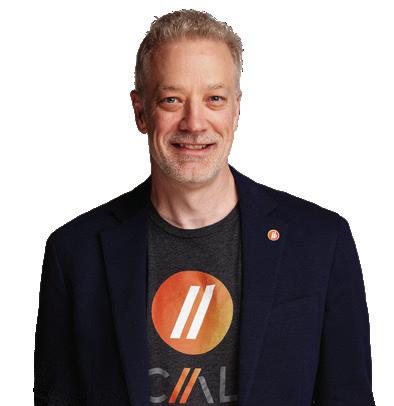

CHANGE-MAKERS
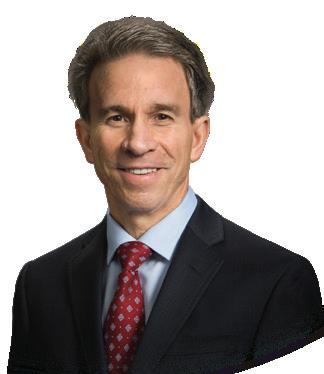
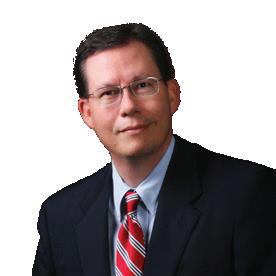
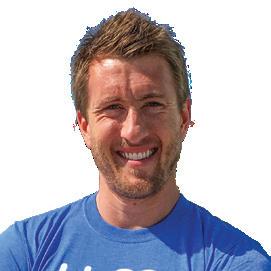
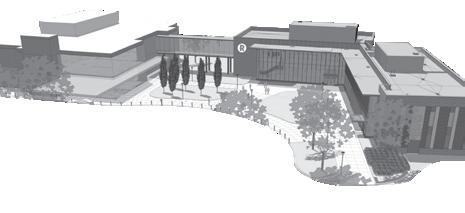
ROSE-HULMAN INSTITUTE OF TECHNOLOGY
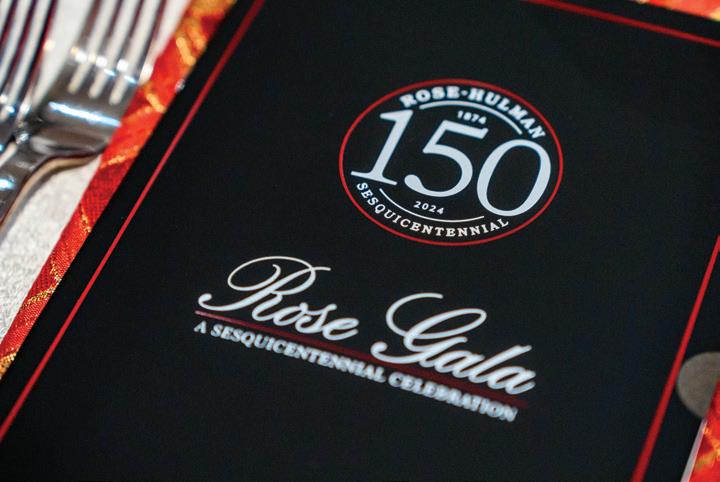
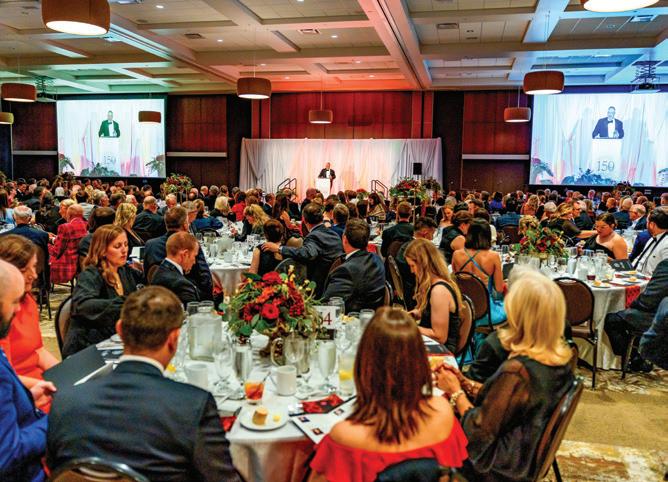



Alumni and the campus community blew out all the candles on Rose-Hulman’s year-long sesquicentennial celebration in unforgettable fashion. Over the past 12 months, the Institute has honored 150 years of excellence with events that sparked memories, rekindled friendships, and showcased the strength of our community.
From coast to coast, more than 700 alumni gathered for 31 events in cities across the country, including Seattle, Cincinnati, Houston, Chicago, and beyond. These gatherings were more than just reunions; they were heartfelt reminders of what makes Rose-Hulman special: connection, camaraderie, and pride in a shared alma mater. Whether it was catching up with classmates at a regional gathering, sharing insights with students at a panel discussion, or raising a glass to the future, each event was infused with the spirit of Rose-Hulman.
On campus, the celebration continued with the same energy and enthusiasm. Students, faculty, and staff joined alumni in commemorating key milestones and reflecting on the people, innovations, and traditions that shaped our history. Signature events like Homecoming and the Sesquicentennial Gala were elevated with special moments of recognition, storytelling, and community pride woven throughout the festivities.



From historical retrospectives to forward-looking conversations, each moment of the Sesquicentennial served as a reminder of our legacy—and our limitless potential. The celebration also sparked renewed engagement, as alumni and friends near and far came together to celebrate the institution that changed their lives.
As we close the book on our 150th year, one thing is clear: Rose-Hulman’s legacy is as bold and bright as ever—thanks to the alumni, faculty, staff, students, and friends who continue to build on it every day.
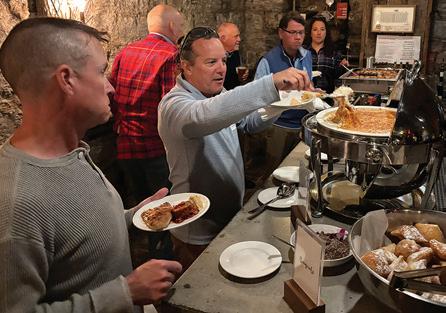
17 CITIES
• Tampa
• Indianapolis
• Detroit
• Los Angeles
• St. Louis
• Atlanta
• Phoenix
• Minneapolis
• Cincinnati
• Louisville
• Houston
• Pittsburgh
• Denver
• Dallas
• Austin
• Seattle
• Washington, DC
4 INTERNATIONAL CITIES
• Tokyo
• New Delhi
• Bangalore
• Mumbai
10 CAMPUS EVENTS
• Rose Gala
• Homecoming
• Sesquicentennial Kickoff
• Virtual Toast
• President’s Holiday Party
• Solar Eclipse
• Alumni Awards
• Sawmill Weekend
• Senior Celebration
• Sesquicentennial Fitness Challenge
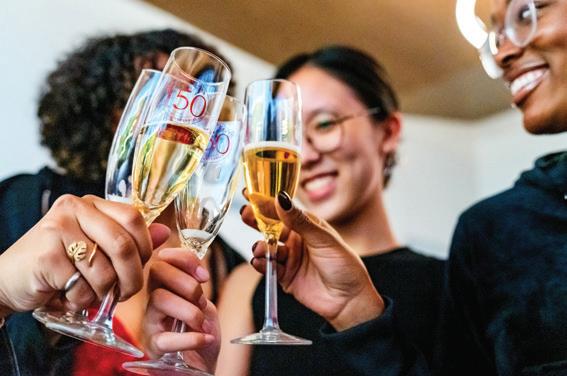

Examine the elements that have shaped the Institute’s endearing legacy at rose-hulman.edu/150video




Chang, Graphic Designer; Kimmie Collins, Communications Coordinator; David Essex, Multimedia Producer; Ashlan Fortner, Marketing Manager; Shaun Hussey, Email and Web Communications Manager; Dale
and Majel Wells, Communications and Operations Manager
Executive Editor: Dale Long
Cover & Page Design: Chris Denison
Contributors: Tim All, PhD; Sylvia Carlisle, PhD; and John McSweeney, PhD, Associate Professors of Mathematics; Kristopher Ligget, Associate Institute Librarian/Archives; Caitlin Nash

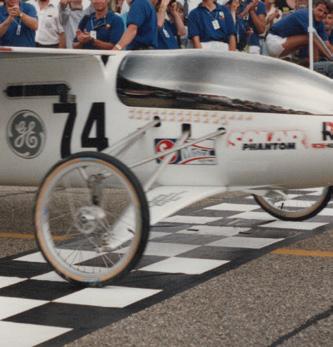
Contributing Photographers: arcDESIGN, Lyndi Bahr, Caterpillar Media Relations, Department of Energy/Battery Workforce Challenge, Larry Elkin (BSME, 1991/MSME, 1993), Michael Huhnke (PH/ME, 1975), Neil Irwin (CE, 1963), Cindy Kalkomey, Marc Lebryk, Michelle Lollie (PH, 2016), NASA/Archives, NASA/James Blair, Mic Orman, SEP/Adam Sturm, Jeff Somers (EE, 1998), Southern Ocean Racing Conference, TechPoint/Marc Lebyrk, and David Yates (EE, 1984)
Class Notes/Alumni News Contact: Send alumni news and address updates to alumnirelations@rose-hulman.edu
Echoes is published by:
Rose-Hulman Institute of Technology
5500 Wabash Ave., Terre Haute, IN 47803 Contact: echoes@rhit.edu
Digital copies of this and past issues are available at rose-hulman.edu/echoes
It is the policy of Rose-Hulman Institute of Technology to admit students on the basis of their academic ability. Rose-Hulman Institute of Technology does not discriminate based on race, religion, color, national origin, sex, age, citizenship status, disability, veteran status, or sexual orientation.
We value your feedback on Echoes— and we’re buying coffee for 100 readers.

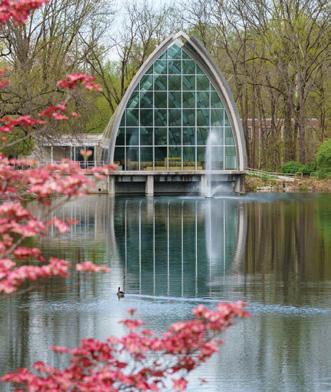
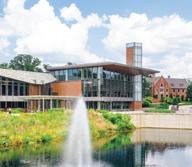





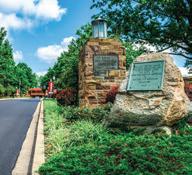







For the first time in more than 20 years, we are inviting alumni to share their thoughts on Echoes through a short, online survey conducted by the Council for the Advancement and Support of Education (CASE).
Your feedback will help shape the future of the magazine and ensure it continues to inform, inspire, and connect Fightin’ Engineers everywhere.





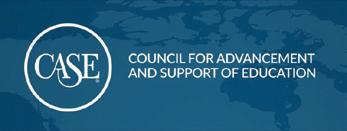
As a thank-you, 100 survey participants will be randomly selected to receive a gift card*—perfect for your next coffee or breakfast treat, on us. Please take a few minutes to complete the survey. * Gift cards will be distributed electronically and may be redeemed at your choice of Starbucks, Dunkin’, Panera, and other select establishments. Winners will be randomly selected from completed surveys and notified by email. Rose-Hulman employees can take the survey, but are not

a
As we turn the page on a historic 2024-25 academic year at Rose-Hulman, I am energized by the continued momentum on campus. We recently concluded our sesquicentennial celebrations—an extraordinary opportunity to reflect on Rose-Hulman’s 150 years of impact while casting our sights on what
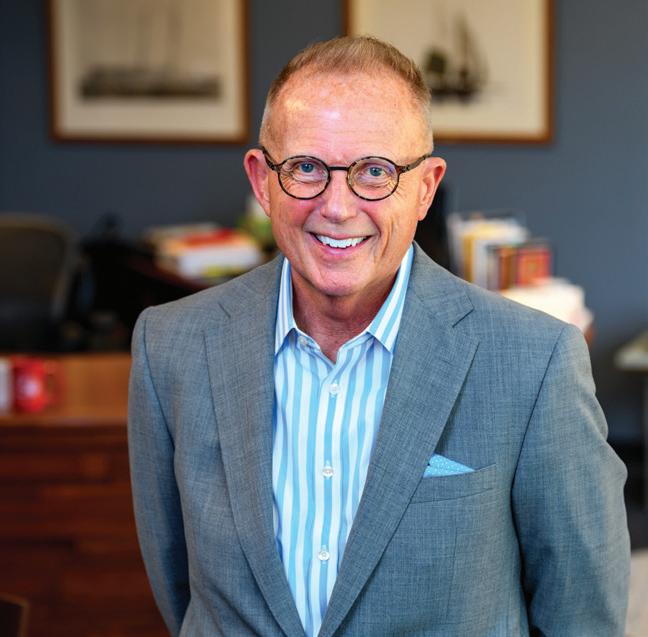
BY ROBERT A. COONS PRESIDENT coons@rose-hulman.edu
is next. With that milestone behind us, we are now fully focused on the future, guided by the priorities of our Advancing by Design strategic plan.
The plan outlines four central themes around sustainability, innovation, discovery and entrepreneurship, global and cultural leadership, and enhancing the affordability and value of a Rose-Hulman education.
These are not just aspirational ideas—they are already taking shape through the efforts of dedicated faculty, staff, and student teams working on 20 active initiatives. You will find more details about this progress on Page 21, and I hope you take a moment to explore how this work is shaping the next era of Rose-Hulman.
This spring, we celebrated another remarkable milestone: our 147th Commencement, during which we conferred degrees to 564 graduates—the largest class in our history (read more on Pages 18–20). Their achievements reflect the strength of a Rose-Hulman education, and the ceremony was made even more meaningful with an inspiring address by Jeff Ready, a 1996 alumnus and CEO of Scale Computing. His message encouraged our newest alumni to take bold, creative steps forward—an apt reflection of the entrepreneurial spirit we are working to cultivate



through initiatives such as the newly announced Noblitt Entrepreneurship Program (NEP).
Summer at Rose-Hulman is anything but quiet. Construction continues on several transformative projects across campus. Our new first-year residence hall is on track for completion to start the new academic year, renovations to the Sports and Recreation Center (SRC) are nearly finished, and we have begun renovations to Speed Hall. Progress and construction are also accelerating at Innovation Grove, where new facilities and programming will give students more tools than ever to explore ideas, launch ventures, and collaborate in ways that align with the hands-on, forward-thinking approach at the heart of our mission.

These bold steps forward are made possible through the generosity of our alumni and supporters, who continue to invest in Rose-Hulman’s future. A $10 million gift from Niles and Nancy Noblitt this April is fueling the creation of the NEP referenced above, which is focused on empowering entrepreneurial students to pursue real-world innovation. Renovations to Speed Hall—set to begin later this summer and reopen for the 2026–27 academic year—are being funded through the combined support of an anonymous alumnus and a
community leader. In addition, Michael and Karen Huhnke have established the Dr. Bruce R. Danner Endowed Faculty Fellowship, honoring our commitment to personal attention and academic excellence in Physics, Applied Optics, and NanoEngineering. And this spring’s Rose Giving Day broke records once again, with 533 donors contributing $679,322—surpassing our ambitious goal and demonstrating the power of collective support for our students, faculty, and campus initiatives.
These advancements—physical, strategic, and programmatic—are a direct reflection of the dedication and shared vision that define this community. From celebrating our past to building our future, I could not be prouder of the direction we are heading.
Thank you for being part of this exciting journey. I look forward to the many accomplishments still ahead.

“Nancy and I want to ensure that future generations of students have the same opportunities I did— to dream big, take risks, and turn ideas into reality.”
Niles Noblitt
BSBIO ENG., 1973/HDENG, 1996 Former Chair, Board of Trustees
Atransformative $10 million gift from alumnus
Niles Noblitt and his wife, Nancy, has established the Noblitt Entrepreneurship Program (NEP), a newly endowed initiative focused on fostering innovation, entrepreneurship, and business-focused opportunities for students.
The NEP will provide students with education and hands-on experiences working with faculty on experiences related to entrepreneurship and the principles of the free market. Through this initiative, students will gain valuable insights into turning ideas into real-world solutions, reinforcing the problem-solving mindset that Rose-Hulman instills in its graduates.
Niles Noblitt—the former Board of Trustees Chair who earned a bachelor’s degree in biological engineering from Rose-Hulman in 1973 and was awarded an honorary doctorate in engineering in 1996—credits his Rose education with shaping his problem-solving approach, a skill that played a key role in his success as a co-founder of Biomet, Inc., a Warsaw, Indianabased biomedical device company now known as Zimmer Biomet. Noblitt was inducted into the Indiana Academy in 2022 for his achievements and contributions to the state.
“This remarkable gift from Niles and Nancy aligns perfectly with Rose-Hulman’s Advancing by
Design strategic plan, which prioritizes innovation, discovery, and entrepreneurship,” says President Robert A. Coons. “We are deeply grateful for the Noblitts’ continued support and commitment to empowering our students with the knowledge and skills to drive meaningful change in the world. Their continued generosity and vision will ensure that future generations of students have access to resources, mentorship, and experiences that encourage entrepreneurial thinking and innovation.”
As a natural extension of the Institute’s Innovation Grove project, the NEP will create a new endowed position, the Noblitt Family Endowed Chair for the Advancement of Entrepreneurship, that will focus a newly hired faculty member on coordinating the many opportunities for students, faculty, and alumni to connect, and build opportunities for collaboration within a dynamic, interdisciplinary environment.
“Attending Rose-Hulman was a life-changing experience for me, and it may not have been possible without the scholarships that supported my education,” remarks Niles Noblitt. “My time at Rose-Hulman instilled in me a problem-solving mindset that has been invaluable throughout my career. Nancy and I want to ensure that future generations of students have the same opportunities I did—to dream big, take risks, and turn ideas into reality. We’re excited to support a program that will inspire innovation and entrepreneurship for years to come.”
The Noblitts have been longstanding supporters of Rose-Hulman, previously contributing $10 million to launch the Noblitt Scholars Program, a merit and leadership scholars program designed to transform the world’s most gifted STEM students into future science and industry leaders. The couple’s ongoing generosity underscores their dedication to strengthening Rose-Hulman’s mission of preparing students for impact-driven careers. n
More details about NEP will be shared in the coming months as Rose-Hulman continues to develop this exciting new initiative.
From breakthroughs that led to color television, put astronauts on the moon, and advanced medical technology, Rose-Hulman alumni have continually pushed the boundaries of what is possible and contributed to lifesaving and life-changing inventions, led successful companies, and in countless ways, have changed the world. Learn about some of these innovative alumni in the following sections——divided in TRAILBLAZERS, CHANGE-MAKERS, and RISING STARS

STORY BY DALE LONG
CONTINUED FROM PREVIOUS PAGE
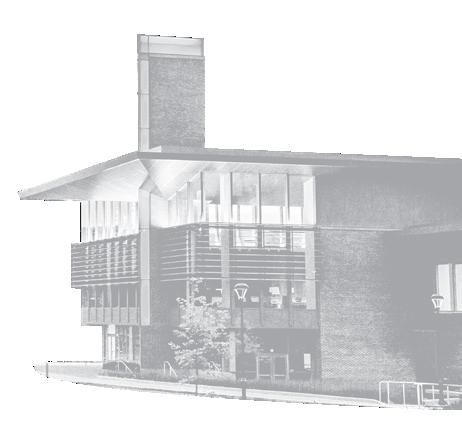
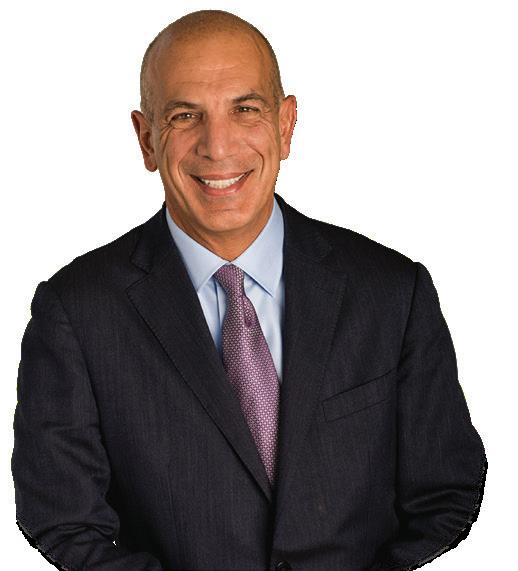
Growing up in the shadows of steel mills in Gary, Indiana, Mike Mussallem (BECHE, 1977/HDENG, 1999) was attracted to Rose-Hulman’s unique culture, outstanding reputation, individual attention, and the promise of interesting career opportunities. These aspects inspired him to spend most of his professional career bringing innovative health care technologies to patients in need around the world.
From 2000 until his retirement in 2023, Mussallem was chairman and chief executive officer of Edwards Lifesciences, which has become a global leader in the development of medical innovations for structural heart disease and critical care monitoring. In this leadership role, he has become an advocate for how technology can improve patient care throughout the world.
A foundation established by Mike and his wife, Linda, is now focused on bringing innovation to health care and impacting underserved groups.
“We have to ensure that we keep motivating innovation in care. That has always been, and will continue to be, a key element in advancing health care,” Mussallem says.
A deeply rooted desire to promote healthy lifestyles had Mike and Linda supporting an expansion to Rose-Hulman’s student union, incorporating an emphasis on health and wellness.

Niles Noblitt (BSBIOE, 1973/HDENG, 1996) combined a love of engineering and medicine into a career as a biomedical technology pioneer, co-founding Biomet Inc., a medical device manufacturer in Warsaw, Indiana, that has been among the nation’s top 10 producers of orthopedic devices. He joined the company’s Board of Directors in 1977 and became its chairman from 1986 until his retirement in 2007 subsequent to the sale of the company. Thousands of patients worldwide continue to benefit from medical technology products and processes Noblitt helped to establish. He remains active in the medical technology industry through a variety of advisory and board member roles with biomedical companies throughout the world.


“You live and breathe problem-solving at Rose,” Noblett says. “That’s what management is—— problem-solving.”
In retirement, Noblitt lent his organizational leadership expertise, problem-solving skills, and commitment to helping others assist in Rose-Hulman’s leadership role in STEM education. He served as the chairman of the Institute’s Board of Trustees from 2018-2023, helping lead the successful $250 million Mission Driven fundraising campaign, the opening of several new campus facilities, and expanded national recognition.
Niles and his wife, Nancy, have been longtime philanthropic supporters of Rose-Hulman and its students. They provided a pair of substantial gifts that created the Noblitt Scholars Program, providing scholarships and student leadership opportunities, and Noblitt Entrepreneurship Program, a newly endowed initiative focused on fostering innovation, entrepreneurship, and business-focused opportunities for students.
As a pioneer of American air and space exploration, Abe Silverstein (BSME, 1929/MSME, 1934) was a creative engineer as a leader in the development of the National Aeronautics and Space Administration (NASA), launching the nation’s satellite programs, and spearheaded the Mercury and Apollo projects that put astronauts on the moon in 1969——keeping a promise he had made to President John Kennedy in 1961. Silverstein was director of NASA’s Lewis Research Laboratory (now Glenn Research Center) near Cleveland, Ohio, making technical and managerial contributions in the development of early jet engines and advocating for the first practical application of the liquid hydrogen engine that would propel the technological space race. He died in 2001.
These contributions earned him an induction into the National Aviation Hall of Fame and the prestigious Guggenheim Medal for his significant contributions to the advancement of flight. He is currently recognized in a new Indiana Aviation Hall of Fame’s Hoosiers in Flight exhibit at the Indianapolis International Airport.


Bernie Vonderschmitt (EE, 1944) made considerable contributions to the development of two of the top technological achievements in the 20th century.
First, during a 34-year career as a researcher in the semiconductor industry with RCA Corporation, Vonderschmitt helped invent technological aspects of the color television (receiving the distinguished David Sarnoff Award for Technology). He then pioneered the programmable semiconductor chip and founded the Silicon Valley-based startup Xilinx Inc., the first company to separate the design of chips from its manufacturing practice. His name is associated with 13 patents covering color TV and solid-state electronics development.
Under Vonderschmitt’s leadership, Xilinx grew into a multimillion-dollar international business whose company’s “fabless” strategy of forming close partnerships with semiconductor manufacturers is now being used by several semiconductor companies throughout the world. Xilinx was acquired by ADM in 2022.
“Rose-Hulman taught me how to learn and I continued learning until my last day on the job,” remarked Vonderschmitt in an interview before his death in 2004.
Robert Wilkins (BSCHE, 1987/HDENG, 2014), J.D., is putting the technical skills learned at Rose-Hulman to good use in his rulings as an U.S. District Court judge for the District of Columbia, a prestigious position he was confirmed by the U.S. Senate after being nominated by former President Barack Obama. Wilkins was well prepared for this judicial challenge. He graduated from Harvard Law School in 1989, served as a special litigation chief at the District of Columbia Public Defender Service, and was a trial and appellate lawyer for the Venable LLP law firm. The Legal Times called Wilkins “the office’s premier advocate for defendants’ rights.”
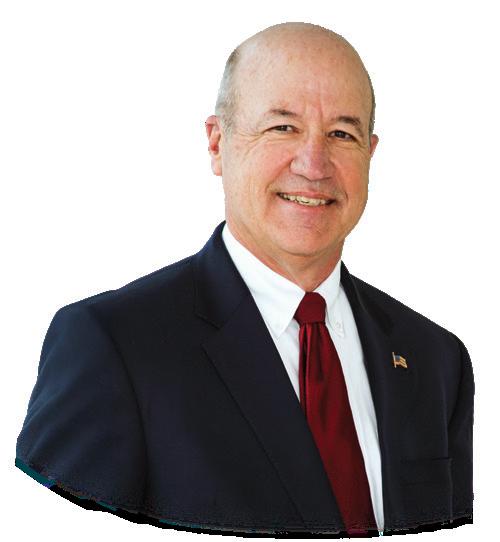
Delivering the best medical solutions to enhance, protect, treat, and heal Americans was the focus of Jim Gilman (BSBIOE, 1974/ HDENG, 2011), MD, during his 33-year military service career and eight years as the first chief executive officer of the National Institutes of Health Clinical Center, the largest research hospital in the world, until his recent retirement.

“I try to sort through the law to determine what the rule is … To the extent that I can help formulate a clear rule, I think my training as an engineer pushes me to do so,” he says.
Wilkins’ career has also featured him serving as president of the National African American Museum & Cultural Complex, helping to plan and create the National Museum of African American History and Culture within the Smithsonian Institution. He wrote about his experiences in the 2016 book, “Long Road to Hard Truth: The 100 Year Mission to Create the National Museum of African American History and Culture.”
“I think that people who are doing something for all the rest of us ought to get really great care,” remarks Gilman, who earned his medical degree from Indiana University School of Medicine. He is board certified in both internal medicine and cardiovascular diseases and is a fellow of the American College of Cardiology.
As NIH Clinical Center’s CEO, Gilman oversaw daily operations involving research protocol designed to further understand medicine, disease, and the human body. This became important as America combated the effects of the Covid-19 pandemic.
A graduate of Rose-Hulman’s Army ROTC program, Gilman retired as a major general following a distinguished U.S. Army military career in which he served as commander of the Walter Reed Health Care System.
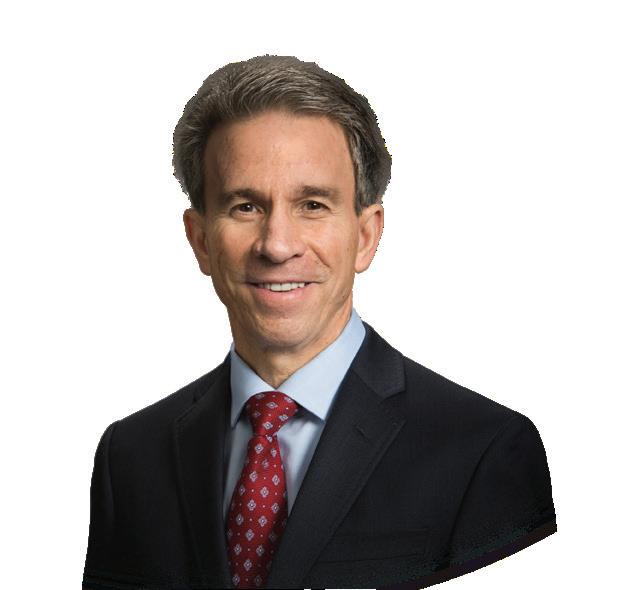
In a commencement address to the Class of 2018, Jim Umpleby (BSME, 1980/HDENG, 2016) called upon the graduates to “be brave, bold, open and compassionate—— and build a better world,” while always remembering the personal relationships, family, and friends that will be alongside them during every step of their careers.

Those elements helped Umpleby in leading Caterpillar Inc. to increased profitability and advancements in technology during his eight years as chairman and chief executive officer—helping the company maintain its stature as the world’s leading manufacturer of construction and mining equipment, off-highway diesel and natural gas engines, industrial gas turbines, and diesel-electric locomotives.
On May 1, Umpleby moved into a new role as executive chairman of Caterpillar’s Board of Directors, after nearly 45 years of service to the company. As CEO, Umpleby led the development and execution of a new strategy for longterm profitable growth, creating significant shareholder value. In 2024, Caterpillar sales and revenues of $64.8 billion and achieved record full-year adjusted profit per share, which increased more than sixfold during his leadership tenure.
Umpleby hasn’t forgotten his Rose-Hulman roots, contributing to the Institute as a trustee since 2015.
“Attending Rose-Hulman was one of the transformative moments of my life, opening my eyes about what could be possible for me,” says the former student body president.
“Rose-Hulman trains students to work in a changing and global workforce. We value that at Caterpillar.”

Jeff Ready (CS, 1996) has taken his computer science skills and entrepreneurial ambitions to become one of the nation’s top 25 Information Technology (IT) innovators while developing Indianapolis-based Scale Computing into a market leader in edge computing, virtualization, and hyperconverged solutions.
Ready co-founded Scale Computing in 2007 and as its Chief Executive Officer has led the company through multiple rounds of funding, explosive growth, and many industry changes. Scale Computing experienced record growth for 2024, with cutting-edge technology that’s bringing innovative solutions and enhancing data processing capabilities to thousands of customers worldwide.
In both 2024 and 2025, Computer Reseller News (CRN), a brand of The Channel Company, ranked Ready atop a distinguished list of the nation’s top 25 Information Technology (IT) innovators, alongside forward-thinking leaders from Dell, Microsoft, Hewlett Packard, and Intel. He has been consistently cited among the Top 25 Disruptors in IT by the publication.
“I love innovation, and I love both creating and helping others create the products and companies that solve real problems for real people,” states Ready, who has provided valuable insight in involving entrepreneurship within the Institute’s Advancing by Design strategic plan. “I thrive on hearing that a customer loves what I’ve helped to build.”

Mike Hatfield (BSEE, 1984/HDENG, 2004) is passing along the lessons learned from a successful career as a serial tech entrepreneur onto the next generation of Rose-Hulman graduates as a leader of the Institute’s Sawmill Society network of entrepreneurial alumni and its Sawmill Angel network. He returns to campus annually to lead discussions with students about their entrepreneurial ideas, co-hosts interesting question-and-answer sessions with rising entrepreneurial stars and is encouraged by the expanding role the Institute’s Innovation Grove District in providing dedicated spaces for alumni to mentor and collaborate with emerging innovators.
“I’m delighted to see how far Rose-Hulman has come in promoting an entrepreneurial mindset within its students and am encouraged to see what’s ahead in the future,” he says.
The Sawmill Angels has provided valuable investments in alumni startups Kalogon, developed by Tim Balz (ME, 2017), and Oro Muscles, developed by fellow Change Maker BCMB, 2013; MSEMGT, 2015)——and hopes to help others in the future.
Hatfield’s entrepreneurial mindset was developed in business classes taught by the late economics professor John Ying, PhD. Hatfield went on to lead several successful communications startups.
“Rose-Hulman unlocked my curiosity about things and gave me the technical know-how and problem-solving skills to tap into that curiosity to develop things that had purpose for others,” he remarks. “Now, I’m trying to encourage the students of today and tomorrow to make their dreams come true.”
“ Rose-Hulman unlocked my curiosity about things and gave me the technical know-how and problem-solving skills to tap into that curiosity to develop things that had purpose for others. Now, I’m trying to encourage the students of today and tomorrow to make their dreams come true.”
Mike Hatfield
BSEE, 1984/HDENG, 2004
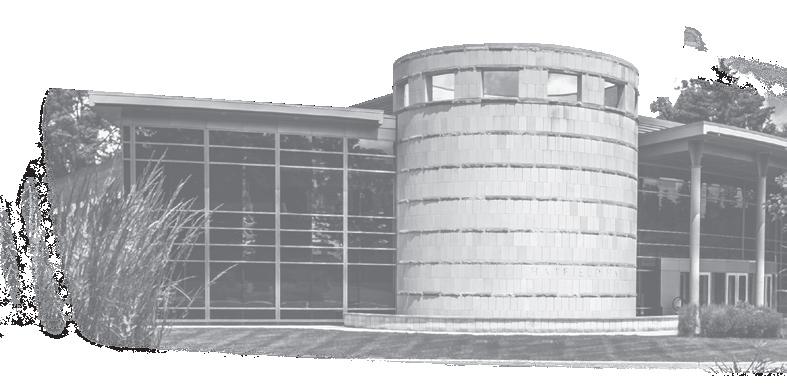
CONTINUED ON NEXT PAGE


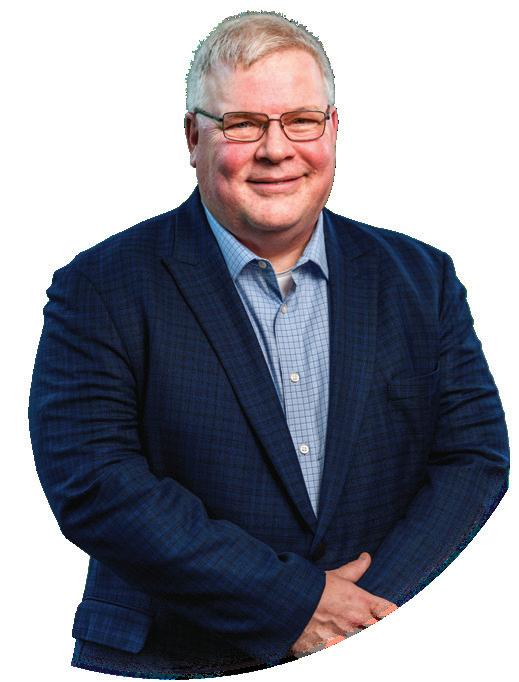
Barry Schneider (BSME 1990/MSEMGT, 2011) isn’t bashful when discussing how the teamwork he developed as a Fightin’ Engineers’ offensive lineman——and the forward-thinking management skills he gained through the Engineering Management graduate program——have helped him lead Steel Dynamics to become one of the nation’s largest and most diversified domestic steel producers and metal recyclers.
“I’m good at working with others in building teams that accomplish our goals and objectives. That’s comes from my time working with teammates as a football player. It was a winning combination at Rose-Hulman and has also served me well at Steel Dynamics,” he says.
Schneider has been with Steel Dynamics since 1995, joining shortly after the company’s founding in 1993, and has served in various operational and leadership roles. Since 2023, he has been the company’s president and chief operating officer, responsible for its steel platform, steel fabrication platform, and metals recycling platform. Prior to that, as a senior vice president, Schneider was responsible for Steel Dynamics’ entire flat roll steel operations.
Several years into his career, Schneider added engineering management skills to his career portfolio, and Rose-Hulman was the obvious choice.
“The engineering management program was ideal for accentuating the strong engineering skills that I had gained at Rose-Hulman,” remarks Schneider, who has served as past president of the Association for Iron & Steel Technology.
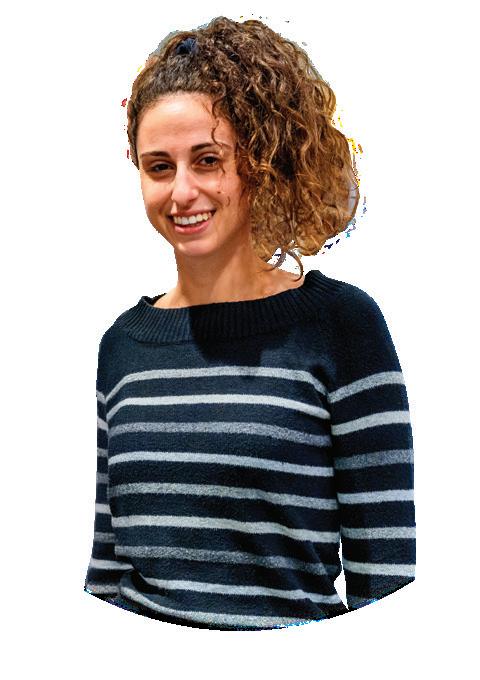
The decade since her graduation has made Tanya Colonna (BSBE/BCMC, 2013; MSEMGT, 2015) appreciate the fruits of the entrepreneurial mindset developed during her Rose-Hulman education and the continuing support of the Institute’s faculty and alumni in her career endeavors.
Oro Muscles, a startup conceived by Colonna and former classmate Hobey Tam (BE/BCMC, 2012), is helping coaches and clinicians throughout the world achieve maximum performance from their athletes and patients. The enterprise is using Artificial Intelligence technology to instantly provide a reliable, repeatable, valid, and actionable display of muscle data. Its first product was launched in late 2024 and the company is now collaborating with leading physiotherapists from international soccer, Major League Baseball, and Olympic teams, and global rehabilitation facilities.
The company’s development has been enhanced by the wisdom of former entrepreneurship professor Tom Mason, PhD, and seed capital from alumni in the Sawmill Society’s Angel network.
“Rose-Hulman has been an invaluable resource for both Hobey and me, through the lessons we learned in all our classes, the friendships we forged with other students, and the Sawmill Society members who have provided valuable financial resources and mentorship,” states Colonna. “As an alum, I have found Rose-Hulman to be like an onion.
Each layer that you peel away, you find another layer that’s sweeter and a surprising discovery. Those layers (within Rose-Hulman) can be your former professors, faculty and staff mentors, and, most importantly, alumni who are successful in so many areas.”

“There’s
so much engineering related to a well-functioning implant that goes into the human body that is best done in person. To bring these people so closely in a facility and [Rose-Hulman] will accelerate the learning and accelerate the innovation to a level that will be faster than you could do if you were separated physically.”
Michael Meneghini (CE, 1995), MD CEO, Indiana Joint Replacement Institute
A novel concept by prominent orthopedic surgeon Michael Meneghini (CE, 1995), M.D., to combine engineering and medicine in an educational setting is becoming reality with the Indiana Joint Replacement Institute’s (IJRI) clinic that’s one piece of Rose-Hulman’s Innovation Grove District, currently under development near campus.
The engineering-meets-medicine facility will allow students to see real-life hip or knee replacement surgeries taking place and use their problem-solving skills as interns, as Rose-Hulman Ventures works with IJRI surgeons to develop new orthopedic devices to help patients through the Midwest.
“This is the perfect idea for collaboration and unique in many ways. If the students are working on a project, or in class learning about hip and knee replacement materials, they can literally walk over and witness a surgery taking place, see how the materials are being used, and see how a project could help a patient,” says Meneghini, who is a national and international expert on joint replacement techniques and currently serves as president of the American Association of Hip and Knee Surgeons. He earned a medical degree from the Indiana University School of Medicine and completed a fellowship in complex hip and knee replacement at the Mayo Clinic. “If more students learn more about engineering and medicine together and excel at a really high level, I’d be thrilled; that’d be the best possible outcome.”

CONTINUED ON NEXT PAGE

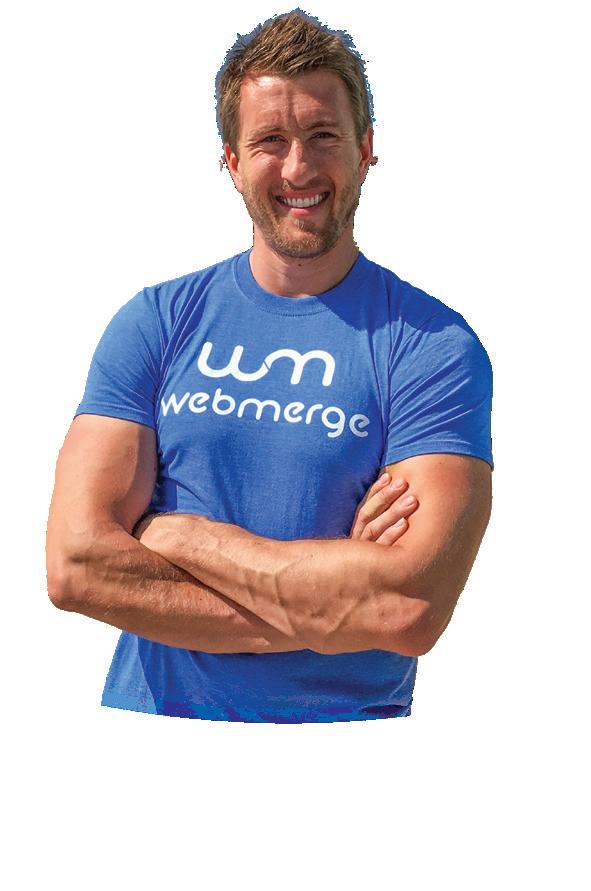

During his senior year on campus, Jeremy Clarke (SE, 2009) was featured on Echoes’ cover as a shining example of the early-stage interest in entrepreneurship within the Institute. Now, 16 years later, he’s already accomplished what seems like a lifetime’s worth of riches while realizing his dreams as a software engineer and entrepreneur, along with being an investor and business owner.
Clarke founded WebMerge, now known as Formstack Documents, in 2011 and spent five years building the business all on his own. Once hitting the $2 million revenue mark, he hired his first (and only) employee. After a successful acquisition by Formstack, Clarke went on to write the book about his success story, “Bootstrapped to Millions: How I Built a Multi-Million-Dollar Business with No Investors or Employees.”
“At my core, I love developing new products that create exceptional value for an industry and customers,” says Clarke, whose latest venture is Quin, a digital relationship assistant. “I take pride in seeing an idea grow from its very early stages, through discovery and research, all the way to a finished product.”

The projects keep getting bigger and filled with more responsibilities and challenges for Chris Bauer (CE, 2001), requiring him to utilize even more of the quality project management and teamworking skills that he gained on campus.
Bauer’s professional portfolio as a construction manager, project director, and project executive with AECOM Hunt is filled with a variety of significant infrastructure projects. He is now the project controls director of the Terminal 6 addition to John F. Kennedy International Airport, a project costing more than $2 billion.
“I like challenges and, like many of my other projects, this one has definitely been filled with logistical and construction management challenges,” says Bauer, whose nearly 24-year career began after graduation. “We’re meeting a demanding construction schedule while working with so many contractors and within the close confines of a site location in one of the largest cities in America.”
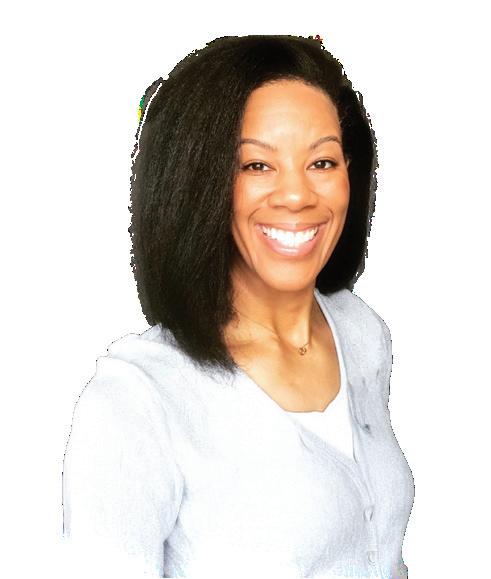
Michelle Lollie (PH, 2016), PhD, an advanced laser scientist at Quantinuum, is especially enjoying 2025 as the International Year of Quantum Science and Technology. After all, she is supporting the design, development and construction of complex optical systems that’s serving as the foundations of world-class quantum computers.
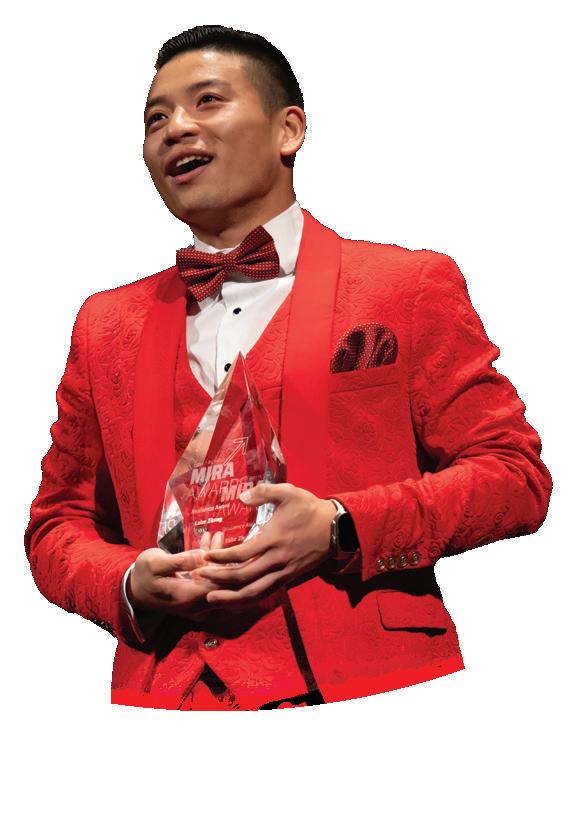
That’s a long way from being a 28-year-old bank employee in Atlanta, with a bachelor’s degree in finance. A research paper on quantum teleportation piqued her interest in becoming a quantum physicist. She sought to enroll in Rose-Hulman’s highly respected optical engineering program as a non-traditional student. Soon thereafter, Lollie was studying STEM courses on campus.
“To consider the trajectory of my career, it all started with Rose,” assesses Lollie. “Rose-Hulman took a chance on me and it was a pivotal moment, because if I hadn’t been admitted into the physics program, it’s a non-zero probability that I might not be in physics today … The words #ForeverRose and ‘Fightin’ Engineers’ mean a lot to me.”
With three decorated Rose-Hulman degrees, it hasn’t taken Luke Zhang (CS/SE/MA, 2017) long to make a difference in Indianapolis’ growing tech community. He received TechPoint’s Resilience Award (2024) and Tech 25 Award (2019), Indy’s Best and Brightest Technology Award (2022), Indianapolis Business Journal’s 20 in Their Twenties Award (2021), and numerous community service-related honors.
That doesn’t include Zhang’s contributions as a senior data scientist/prototype leader with Resultant, an Indianapolis-based consultancy. He created and led the company’s flagship cross-functional rapid prototyping team. The process is revolutionizing the consulting industry by providing a free six-week trial of building proof of concept services with design thinking methodology.
“A data scientist is a person with a little bit of business knowledge, quite a bit of math know-how, and the necessary coding skills to develop a technical process that quantifies complex problems,” remarks Zhang, advocating companies to use data science to harness machine learning and artificial intelligence. CONTINUED ON NEXT PAGE


Central Indiana’s SEP software product design and development firm continues to earn recognition for core principles deeply rooted in the values of the Institute.
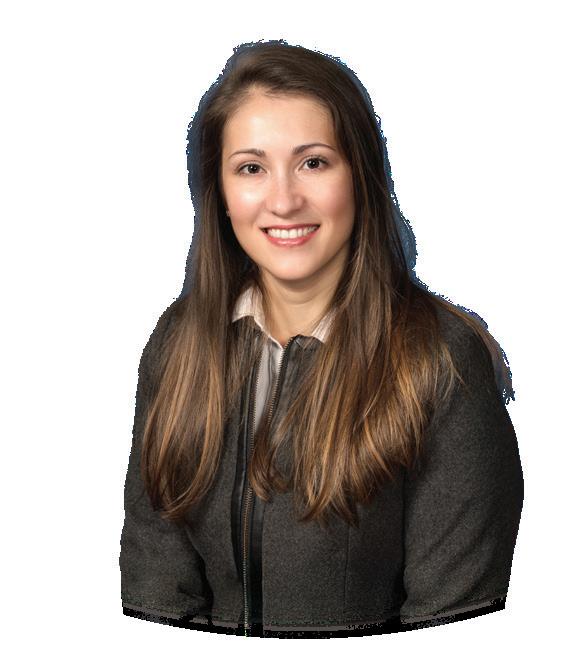
Already in 2025, the company has been named TechPoint’s Exceptional Employer of the Year, ranked the No. 1 Top Workplace by the Indianapolis Star, and recognized as a Top Midsize Employer among the Best Places to Work in Indiana.
President and Chief Executive Officer Raman Ohri (CPE, 1993) proudly accepted the honors on behalf of SEP’s 171 employees, of which 54 are alumni.
A few of the principles that any Rose grad would find within SEP are: Focusing on understanding a client’s world and solving the key problems; an environment where people can do their best work–supported and always learning; instilling confidence to tackle any technical challenge; and a relentless desire to improve in every aspect of the team’s work and the company.
“As software has eaten the world, the tools, platforms, and paradigms have arrived at an ever-accelerating pace,” Ohri says. “It would be very, very difficult to be a professional in technology without the ability to constantly learn.”

Researcher. Educator. Health care advocate Mariya Krisenko-Lewis (BIO, 2010), PhD, believes she has the best of those areas in the newly appointed position of associate director of Medical Science Liaison oncology services for Astellas Pharma.
As part of Astellas Pharma’s global field medical affairs team, Krisenko-Lewis leads and executes field medical activities that support the medical affairs strategies for prostate cancer therapeutics. She uses clinical knowledge and field expertise to identify and communicate business and scientific trends in the health care environment.
“A big part of my job is answering health care providers’ questions about our product in a non-promotional, purely clinical and scientific way,” she says. “I also work with top-notch researchers to bring new trials and innovation that aligns with driving the field of prostate cancer forward.”


ENTREPRENEURSHIP IS ALIVE ON CAMPUS THROUGH THE FOLLOWING PROGRAMS:
This newly endowed initiative will provide students with education and hands-on experiences related to entrepreneurship while gaining insights into turning ideas into real-world solutions. (Learn more on page 21)
Yaw Aning (CE, 2007) has transformed the passion for technology and innovation cultivated on campus into a successful entrepreneurial journey–a career pathway that’s been as steadfast as the millions of packages his innovative e-commerce delivery company will be tracking throughout this coming holiday season.
Along the way, Aning has positioned himself at the forefront of the intersection between technology and customer experiences. He has spent the past six years growing Indianapolis-based Malomo into an awardwinning tracking application that’s raised more than $8.2 million in capital investment and shown growth of 500% in revenue. Along the way, it has helped more than 400 clients empower Shopify brands to market to customers throughout the shipment process.
“We’re not just building a product; we’re creating a movement where brands can connect with their customers in meaningful ways,” says Aning, who has been named the Indiana tech community’s Entrepreneur of the Year. “We’re part e-commerce, part logistics, and part customer branding–helping our clients manage all those things.”
Although not directly affiliated with the Institute, this network allows alumni to give back to the Rose community by encouraging and investing in the next generation of entrepreneurs and innovations. Learn more at roseangels.org.
Paid summer opportunities are helping students launch startup projects presented during the annual Sawmill Society Weekend.
Student teams were paired with professional mentors this spring in a first-ever event, organized by the Rose Innovative Student Entrepreneurs club, that defined realistic project scopes and gain guidance, advice, and industry insights.
This living-learning community introduces students to the essential principles of entrepreneurship and business success. The program hosts an annual Startup Weekend, where student teams develop projects, several of which have turned into startups. n
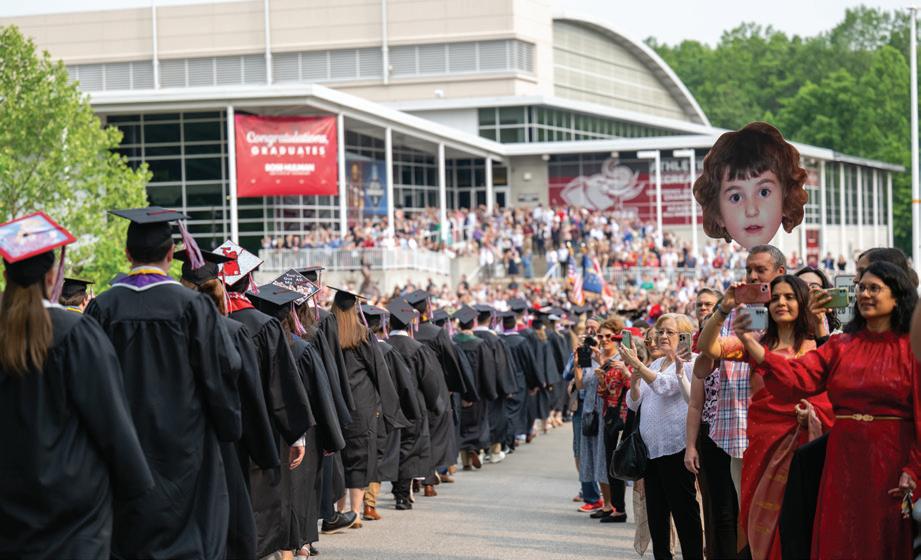
PHOTOS BY BRYAN CANTWELL AND MARC LEBRYK
Members of a record-breaking Class of 2025 are ready to dream big, embrace disruption, push the boundaries of what is possible, and create a better tomorrow after earning bachelor’s and master’s degrees—in many cases both—during the Institute’s 147th Commencement.
This year’s graduates join a list of Rose-Hulman alumni who have forged innovative breakthroughs leading to such life-changing developments as the color television and transistor radio, semiconductors, and lifesaving medical technology advancements. The college’s graduates also have contributed toward putting astronauts on the moon, helped countless patients regain mobility with joint replacements, and started entrepreneurial companies throughout the world.
“In countless ways [Rose-Hulman alumni] have changed the world. And you will too!” stated Rose-Hulman President Robert A. Coons before handing diplomas to 564 graduates—the largest graduating class in school history. In closing remarks he recalled a famous quote from Apple Computing entrepreneur Steve Jobs, “Innovation distinguishes between a leader and a follower.”


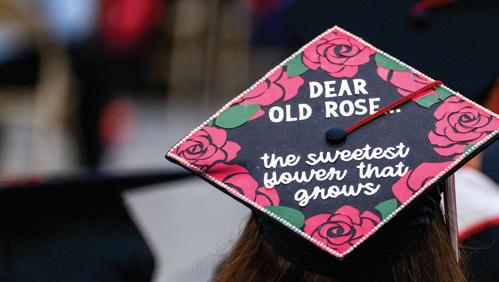
Coons added, “Today, I am confident I am looking at a group of leaders. Leaders poised to predict the future, by creating it!”

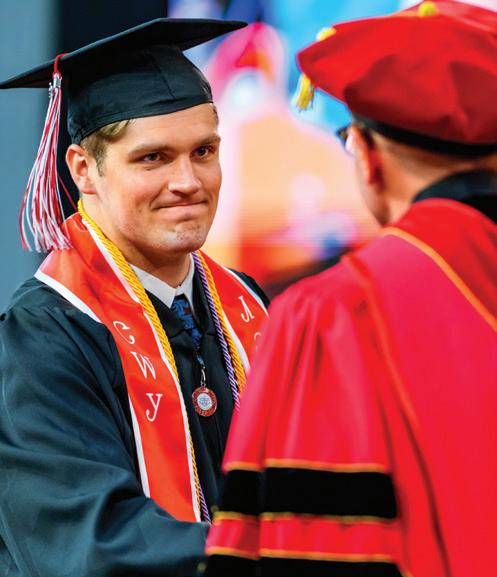
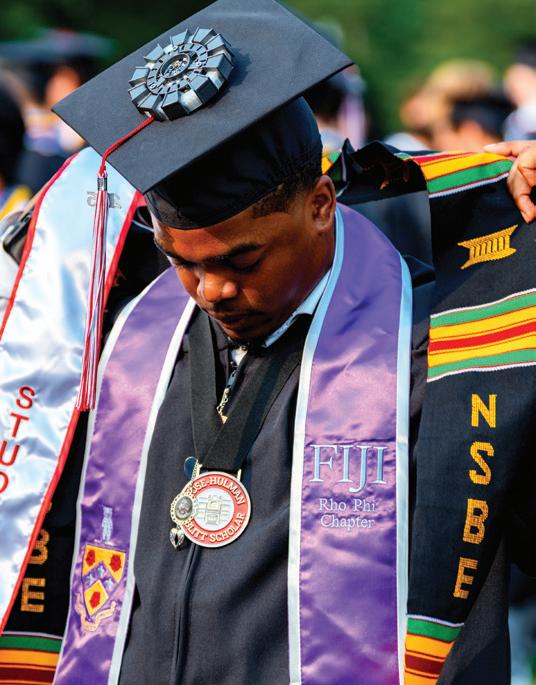
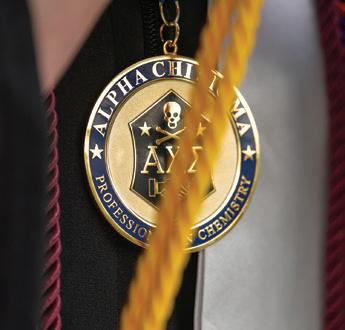
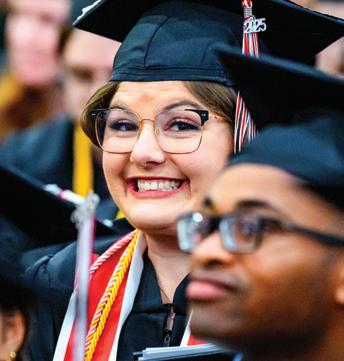


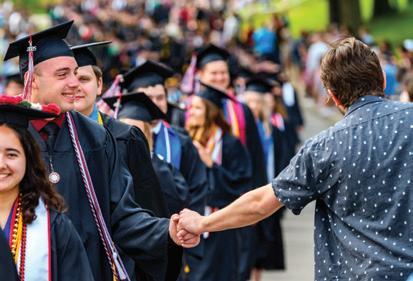
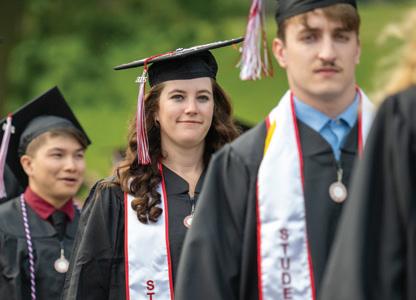

In a powerful and well-received commencement address, Jeff Ready (BSCS, 1996/HDENG, 2025) took members of the Class of 2025 down a pathway of Rose-Hulman memories shared by current and past students. He asked Rose-Hulman’s new alumni group to recall the spark that ignited their passion to become engineers, scientists, or mathematicians.
“When you least expect it, life will surprise you—surprises that may dwarf the stress you felt as a student here: Career challenges, financial setbacks, health issues, and family struggles. It happens to all of us,” Ready said. “When that happens——when things feel harder than you ever expected——stop for a moment and reconnect with your spark. Let it remind you why you started down this path and what drives you.
Because that spark is yours alone——and it’s uniquely powerful enough to carry you forward.”
View Jeff Ready’s commencement address at bit.ly/3ZPT4uf (speech starts at 1:30:30 mark)
564 | Number of Bachelor of Science and master’s degree graduates —— A RECORD
138 | Number of women receiving bachelor’s and master’s degrees (24%)
53% | Percentage of undergraduates graduating with academic honors
72 | Number of students earned bachelor’s and master’s degrees during their four years on campus through the Rose Squared concurrent degree program
63 | Number of first-generation graduates receiving bachelor’s and master’s degrees (11%)
39 | States represented among graduates
8 | Other countries represented
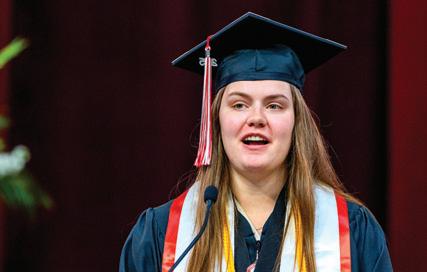

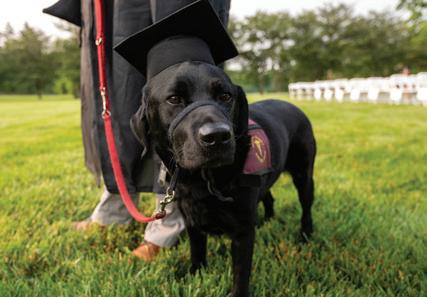


John T. Royse Award
Most outstanding graduate, based upon academics, student leadership, activities, and campus citizenship
Vineet Ranade | Computer Engineering
Herman A. Moench Distinguished
Senior Commendation
Commendable influence on the Rose community
Alisha Mastakar | NanoEngineering and Optical Engineering
Heminway Gold Medal
Highest academic achievement
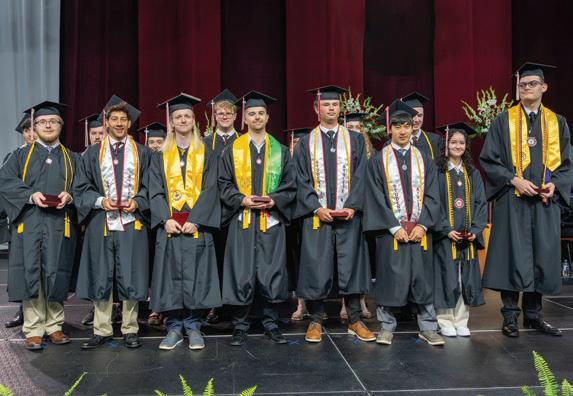


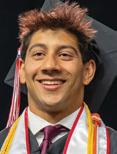

Salik Ahmad | Computer Engineering
Kyle Asbury | Computer Science and Mathematics
Ariadna Duvall | Software Engineering
Calvin Hamilton | Computer Engineering
Natalie Hannum | Biomedical Engineering
Kaylee Lane | Computer Science
Benjamin Lyons | Mathematics and Physics
Henry Nunns | Computer Engineering and Mathematics
Vineet Ranade | Computer Engineering
Justin Roberts | Computer Engineering
Joshua Schrock | Computer Engineering
Mark Serdinak | Mechanical Engineering
Ellen Shales | Biomedical Engineering
Blaise Swartwood | Computer Science
Isaac Towne | Computer Engineering
Dean’s Outstanding Teacher
Daniel Chang , PhD | Associate Professor of Electrical and Computer Engineering
Board of Trustees’ Outstanding Scholar
Tim Grose, PhD | Associate Professor of China Studies
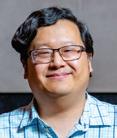
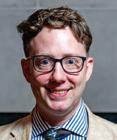
President’s Outstanding Service
Dale Long | Executive Editor of Echoes Alumni Magazine and Director of Media Relations
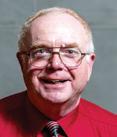
Relive the Class of 2025’s Commencement Day at rose-hulman.edu/25gradvideo

With goals to be bold, be visionary, and build upon Rose-Hulman’s excellence in STEM education, the Advancing by Design strategy plan has produced a robust, stakeholder-focused, two-year planning process to set a framework for the direction for the Institute over the next decade.
This strategic plan addresses four core themes:
• Infuse Sustainability into Rose-Hulman Education and Culture
• Instill a Mindset of Innovation, Discovery, and Entrepreneurship
• Prepare Students to be Leaders in a Global and Complex Society
• Increase the Affordability and Value of a Rose-Hulman Education
These themes include more than 20 action items, currently championed by planning and implementation teams that include faculty, staff, and student leaders. These teams have made significant strides. Some highlights of the first-year accomplishments include:
In a commitment to sustainability, plans are in place for a capstone design team to analyze campus waste streams to better understand recycling and reuse rates. Conversations continue around future partnerships and infrastructure, including utility-scale energy projects and more.
Site work has started on the construction of the Institute’s Innovation Grove district, which will create a vibrant hub for creativity and collaboration. A $10 million gift from alumni Niles and Nancy Noblitt has launched the new Noblitt Entrepreneurial Program, providing key support for student innovation and competition teams——and building momentum for even greater investment in entrepreneurial experiences.
In response to an increasingly interconnected world, the Institute is beginning the active exploration of new intercultural learning opportunities to strengthen students’ global and cross-cultural awareness.
With evolving student needs in mind, new housing options are actively being explored. The academic calendar is also under review to offer more scheduling flexibility. Both of these efforts are in their early stages but area producing exciting ideas.
All of these efforts are being led by Associate Vice President of Strategic Initiatives Rick Stamper (ME, 1985), PhD, as the primary facilitator of our strategic plan. He is also focusing his efforts as lead for Innovation Grove and Lilly Endowment Inc.’s College and Community Collaboration grant. n
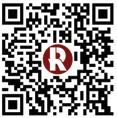
View the full plan at: rose-hulman.edu/strategicplan
Rose-Hulman ranks among the top 1% of colleges nationally for return on investment, based on its high career earnings, net price value, and high placement rates, according to research by Georgetown University’s Center on Education and the Workforce.
The 2025 study analyzed nearly 4,600 higher education institutions using new data from the U.S. Department of Education’s College Scorecard. It places Rose in the top 50 colleges nationwide after examining alumni statistics at 40-, 30-, and 20-year intervals in their professional career.
Specifically, the study estimates the following lifetime ROI for students entering the Institute based on the 2021-22 academic year as the most recent data: 40-Year ROI, $3,347,000 (rank 40th nationally); 30-Year ROI, $2,324,000 (rank 41st nationally); and 20-Year ROI, $1,300,000 (rank 47th nationally).
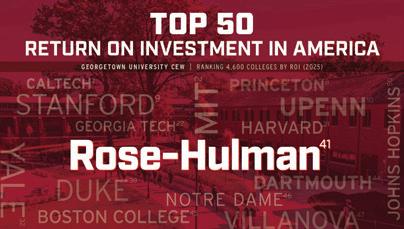
In these cases, Rose-Hulman’s ROI ranks alongside or above a list of U.S. colleges and universities that includes Harvard, Yale, Cornell, Notre Dame, Washington University (St. Louis), Johns Hopkins, Northwestern, and Vanderbilt.
Find out more about Rose’s rankings and distinctions at rose-hulman.edu/rankings
The Class of 2024 enjoyed record starting salaries ($82,817 with the highest accepted salary reaching $135,000) and excellent job/graduate school opportunities, based on the graduates’ strong academic credentials and internship/co-op/research opportunities.
Graduates accepted roles with 215 leading employers and were accepted into prestigious institutions. Career opportunities spanned 35 U.S. states, Australia, Canada, China, Korea, the Netherlands, and Saudi Arabia.
Majors with 100% placement rates were Biochemistry, Biology, Biomathematics, Chemistry, Civil Engineering, Engineering Design, International Computer Science, Optical Engineering, and Physics/ Nanoengineering. Mechanical Engineering (99%) and Electrical Engineering (98%) also demonstrated exceptional placement outcomes.
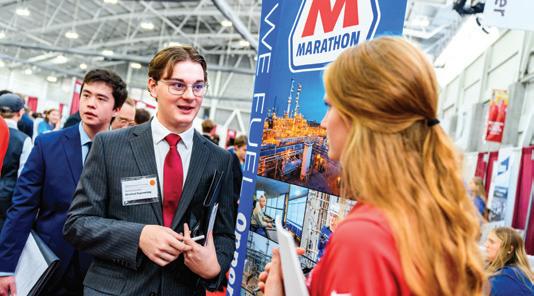
The sixth annual Rose Giving Day was a record-breaking success, with alumni, faculty, staff, students, and friends of the Institute coming together to make a lasting impact.
Once again held on March 14——Pi Day ——this year’s campaign surpassed expectations, aising $679,322 from 533 donors, exceeding the ambitious goal of $675,000 and breaking last year’s record $650,233 raised.

$679,322 Raised by 533 Donors
These contributions will provide vital support for student scholarships, academic programs, athletics, mental health services, campus initiatives, and other key areas that enhance the Rose-Hulman experience.
A number of donors helped amplify the impact of Rose Giving Day through matching challenges:
Dave Hoecker (ME, 1969) and his wife, Susan, matched the first $10,000 given to Rose-Hulman’s Greatest Needs.
Trustee Cindy Kalkomey and husband, Kurt, issued a $10,000 match for contributions to Greatest Needs.
Joe Moser (EE, 1956) and wife, Judy, pledged $20,000 if donors collectively gave $20,000 to any academic department, with their match benefiting the Mathematics Department.
Frank Levinson (ME, 2003) and Becky Levinson (CHE, 2005) provided a $20,000 match for all donations to class scholarships.
Marie Stettler Kleine (ME/IS, 2014) and Kaleb Kleine (EE, 2014) pledged $10,000 if an equal amount was raised for the Engineering Design program.
Trustee Janet and David Cooper matched $10,000 in donations to support Rose-Hulman’s summer programs.
Trustee Dan Price (CE, 1975) and wife, Elise, made a $10,000 donation in honor of the Class of 1975’s 50th reunion.
Craig Pohlman (CS, 2000) made a $5,000 donation in honor of the Class of 2000’s 25th reunion.
President Robert A. Coons and his Cabinet offered matching gifts of $10,000 and $5,000, respectively, to encourage widespread Giving Day participation.
Trustee Kelly Noel (EE, 2002) matched $10,000 in contributions to mental health services.
Randy Potts (CHE. 1971) pledged $5,000 in support of ROTC.
Roger Vandersnick (ME, 1985) supported athletics with a generous $35,000 match.
Greg Gotwald (CHE ’01) and wife, Lindsay, matched $25,000 in tribute donations, with their contribution directed to the Annie Gotwald Memorial.
Cynthia (Cindy) Thomas Kalkomey is continuing her lifelong support of STEM education and Rose-Hulman through her recent appointment to the Board of Trustees. Her connection to the Institute runs deep. Her late father, Charles “Ted” Thomas (EE, 1943), went on to a distinguished 28-year career with Texas Instruments’ defense systems division, retiring in 1986 from a senior technical leadership role.

In 2023, Cindy and her husband, Kurt Kalkomey of Dallas, Texas, honored her father’s legacy with a $500,000 gift to establish a scholarship fund for Rose-Hulman students.
Cindy brings to the trustee role an impressive academic and professional background in STEM. She earned a doctorate in statistics from Southern Methodist University, following master’s and bachelor’s degrees in mathematics and statistics from Stephen F. Austin State University in Texas.
Cindy began her career as a geostatistician with Mobil Oil’s research lab and taught technical short courses to Mobil affiliates around the world. In 1995, Cindy and Kurt co-founded Kalkomey Enterprises, a company that merged their love of the outdoors with their STEM expertise. They sold a majority interest in the company in 2015, though Cindy continued to serve on its board for several years. Today, the Kalkomeys focus their efforts on philanthropy—with Rose-Hulman playing a key role in their mission to expand educational opportunities in STEM.
This year’s Rose Show had students proudly displaying 130 projects in nearly every academic discipline that displayed innovation, entrepreneurship, and sustainability. One team of students “walked” their robotics project on a leash while another group strapped on a pair of virtual reality goggles, their joysticks and their project helping other developers have more fun and fewer challenges while creating virtual reality games. Another team toasted their success with the DrinkBot, sipping customized drinks that their client project created, while two more students presented research about how coffee roasts and bean grind sizes affect caffeine content.

The Computer Science and Software Engineering and Physics, Optical Engineering, and NanoEngineering programs are advancing their names and academic offerings to meet the dynamic needs of today’s workforce and the future of computing and science.
Beginning in fall 2026, the Software Engineering and Computer Science programs will merge into a single, unified Computer Science major. This evolution reflects the department’s commitment to offering a modern, flexible curriculum designed to prepare students for success in the ever-changing tech landscape.
The unified Computer Science major will provide a robust foundation in both computer science and software engineering principles while enabling students to explore specialized areas of personal interest. A key feature of the new curriculum is the introduction of two pathways: Developer——Software development, industry, and practice (geared for students pursuing a career in industry) and Researcher——Theory, applications, and research (for students interested in a research career or graduate school). Each pathway offers opportunities to delve into any subfield of computing——with areas of specialization such as software engineering, data science, systems, artificial intelligence, and cybersecurity.
Meanwhile, NanoEngineering has replaced Engineering Physics in the Department of Physics, Optical Engineering, and NanoEngineering’s name, reflecting a commitment to staying at the forefront of emerging fields and recognizes the growing impact of the NanoEngineering program. This shift is more than just a name change, which happened this spring—it marks a strategic step forward for the department and the Institute. By embracing NanoEngineering alongside long-standing strengths in physics and optical engineering, the department is preparing students to be leaders in cutting-edge technology and innovation.
The first-ever STEM Jubilee, presented by the Noblitt Scholars Program, brought nearly 500 bright young minds to campus this spring for a fun-filled day of STEM activities. Elementary and middle school students bubbled with excitement at the chance to visit over 30 different booths led by more than 150 Rose-Hulman student volunteers. From learning about circuits so they could build their own lightsabers to discovering chemical processes through making bottle rockets and slime, each booth ignited students’ curiosity about a particular aspect of STEM.
STEM Jubilee Project Co-Lead Makayla Johnson remembered the impact that similar events had had on her younger self and wanted to create a space where everyone felt welcome in STEM.

Learn more about this year’s Rose Show at https://tinyurl.com/2dw3jca7
“Making STEM really fun when I was in elementary school was probably the biggest reason as to why I’m interested in it now, as well as why I pursued it in high school,” the biomedical engineering student said. “STEM is a huge field that people may not have a ton of information about. There’s more to it than what you think.”
The mission was accomplished. Smiles sparkled from both sides of the tables as current Rose-Hulman students shared their passions with the next generation of scientists, technologists, engineers, and mathematicians through hands-on creations.
See the fun times at the STEM Jubilee at https://tinyurl.com/ybvsnfv7

Two generous gifts from an alumnus and a Terre Haute community leader are helping make a significant investment in student housing with a major renovation of Speed Hall, a first-year residence hall that has served students since 1963. They also support increasing demand for campus housing as enrollment nears record levels.
The $10 million project will modernize the nearly 60-year-old hall, bringing central air conditioning, upgraded plumbing and electrical systems, expanded common areas, and improved accessibility.
“These gifts will enhance the residential experience for our students, addressing both our growing enrollment and the evolving needs of campus life,” says President Robert A. Coons. “Investments like these ensure that our living and learning environments continue to support student success for generations to come.”
The combined resources of an anonymous alumni gift and a contribution from an anonymous ccommunity leader will facilitate the funding of the Speed Hall renovations, which are set to begin later this year. The updated hall will reopen for the 2026-27 academic year.
“It is incredibly rewarding to see alumni and friends give back in such a meaningful way, reaffirming the lifelong value of a Rose-Hulman education,” Coons added. “Their generosity is a testament to the strength of our mission and the transformative experiences we provide.”
This renovation is part of Rose-Hulman’s broader commitment to enhancing campus housing. In addition to the Speed Hall project, a new $31.5 million, four-floor residence hall—designed to house 160 first-year students—is set to open this fall. n
The Swearingen Leadership Series, Noblitt Scholars Program, Rose Research Program, Spring Convocation, and Campus Professional Development Program brought a variety of leading scientists, entrepreneurs, and engineers along with best-selling authors to campus this winter and spring to share their insights on leadership and lessons for STEM career success.
FEATURED SPEAKERS WERE:
• Jayshree Seth, innovator, author, and 3M corporate scientist who has received the Society of Women Engineers’ Highest Achievement Award.
• Marshall Goldsmith (BSECON/MA, 1970/HDENG, 2023)), PhD, New York Times bestselling author and executive coach who has been recognized as a top business thinker and leadership coach.
• Tomi Adeyemi, novelist and one of TIME magazine’s 100 most influential people.
• Kristen Hadeed , acclaimed entrepreneur of the Student Maid enterprise and a leadership expert.
• Dedric Day (CHE, 2003), senior director of human relations strategic talent partnerships with Eli Lilly and Company.
• Nina Tandon, EpiBone chief executive officer/co-founder and biotech leader.
The Swearingen Leadership Series was established through support from John Swearingen (BSCHE, 1981/HDENG, 2024) and his wife, Anne. Meanwhile, the Noblitt Scholars Program was supported by Niles Noblitt (BSBIOE, 1973/HDENG, 1996) and his wife, Nancy.
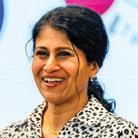
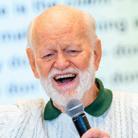
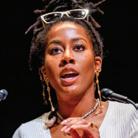

Middle and high school students’ drones whizzed through the Sports and Recreation Center’s fieldhouse this spring as the low whir of their engines filled the air during the REC Foundation’s Aerial Drone Competition. Eleven teams tested their drone coding and piloting abilities, working together to advance their STEM skills. This was Rose-Hulman’s first year serving as an event partner and host for the competition, which was sponsored through a grant provided by Duke Energy. “We always want to promote design thinking and problem solving, which are important skills for any engineer, mathematician, or scientist,” says Associate Vice President of Strategic Initiatives Rick Stamper (ME, 1985), PhD.
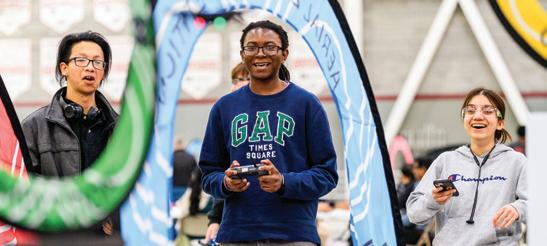
The strong values within Rose-Hulman’s Greek system–a sense of community, strong support system, personal development, and giving back to the community——came together this spring when Alpha Tau Omega Gamma Gamma chapter members organized and completed a grueling service project supporting neonatal intensive care unit (NICU) services at Riley Hospital for Children.
The Carmine’s Convoy event raised $42,000 from a 66-mile walk over the course of two days, starting at the ATO chapter house on campus and ending in front of the hospital in downtown Indianapolis. This effort was a personal one in many ways for fraternity members and one of its alumni, Thomas Reives (BSME, 2008/MSEMGT, 2010), whose Rook’s Resources Inc. charity recognizes Thomas and Shecara Reives’ late son Rook William. (Carmine Convoy is named for the couple’s other son, 7-year-old Carmine Acie, who required extensive NICU services after being born in the spring of 2017 with his twin brother, Rook.)
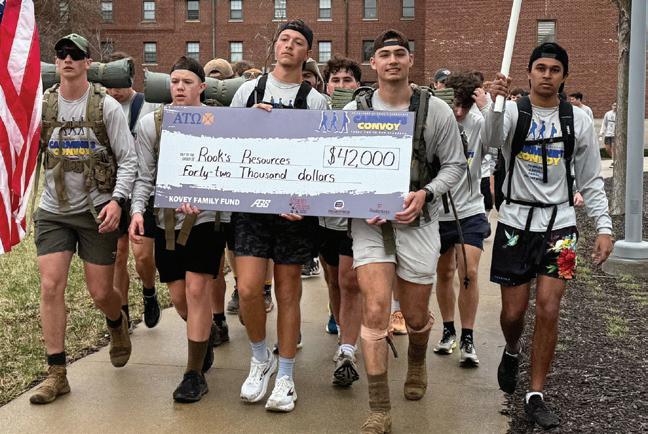
Rook’s Resources has been providing children’s books, Mother’s/ Father’s Day gift baskets, holiday toys, and dinners at Ronald McDonald House Charities for several years to families with preterm babies in NICUs at Indianapolis children’s hospitals. Now, with support from the ATO chapter and other community donors, Rook’s Resources will be sharing nourishment supplies (including sports drinks, lactation cookies, and meals) with families in Riley Hospital for Children’s NICU Quiet Lounges. And the Reives’ future goal is to make Welcome to the NICU (or Bienvenido a la NICU) books available free to any family entering a NICU at all major children’s hospitals across the United States.
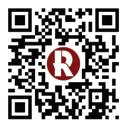
Learn more about Carmine’s Convoy at https://tinyurl.com/3a8txtv7 View the
Entrepreneurial-minded students received plenty of encouragement, valuable feedback, and possibly funding from successful alumni for a variety of creative and innovative ventures that could make a difference in others——an example of the growing entrepreneurial spirit that’s spreading across the Institute.
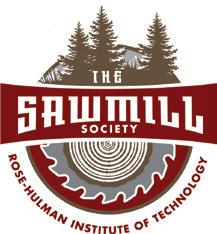
This year’s Sawmill Society Weekend brought together a group of forward-thinking alumni and friends to consider supporting student and alumni projects through summer ventureships and investments. Society members also highlighted how Rose-Hulman’s close-knit campus community, rigorous academic environment, and caring faculty mentorships have laid a solid foundation for innovation success.
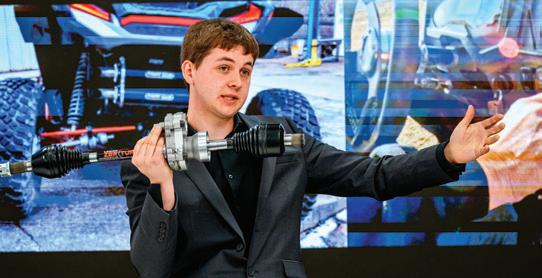
When Elijah Johnson (OE, 2025), Andrew Nichols (ME, 2025), Evan O’Brien (CS, 2025), and Ryan Brown (CS, 2025) graduated in May, they left campus with more than a bachelor’s degree. They departed with a fully-formed startup—with funding, a location, and a business plan already in place. Zernike Precision Optics Inc. was created to provide high-quality, custom aspheric lenses quickly and affordably, making custom optical components more accessible. The company combines the students’ engineering and computer science skills with their passion for entrepreneurialism, all of which they credit Rose-Hulman’s ESCALATE program for developing and encouraging. The students’ idea sprouted from last fall’s campus Startup Weekend, has received investment from the Rose Angels Network, and support from Rose-Hulman Ventures. The company has been accepted into The Mill, a non-profit center in Bloomington, Indiana, for coworking and entrepreneurship and they have attended the Global Entrepreneurship Network Congress in Indianapolis.
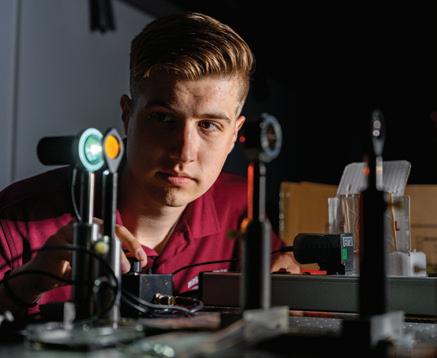
Learn more about this enterprising startup at https://tinyurl.com/5n74m3bf

Rather than an entrepreneurial Shark Tank session, it might be referred to as an Elephant Tank–filled with opportunities to exchange ideas with such alumni as Niles Noblitt (BSBIOE, 1973/HDENG, 1996), co-founder of Biomet, Inc.; Mike Hatfield (BSEE, 1984/HDENG, 2004), who led successful startups Carium (recently acquired by Healthmap) and Cyan Inc.; Tim Daniel (EE, 1981), a coach/instructor with Widener University’s Small Business Development Center; trustee Carla McFarland; Koushik Subramanian (CPE, 2006); Tanya Colonna (BSBE/BCMB, 2013; MSEMGT, 2015), chief executive officer/founder of Oro Muscles; and Umang Bhatia (CHE, 2019), a senior credit/treasury analyst with ADM Investor Services in Chicago.
Eleven student project presentations covered such innovations as five-axis 3D printing technology, Artificial Intelligence-powered technology solutions for video production and mental health treatment, an aftermarket performance kit that allows utility task vehicles to make zero degree turns, and platforms that help job seekers and employees screen for career opportunities. Several of these ideas may get support from the Sawmill Society’s Ventureship program, supported by the Rose Angels Network, to continue further project development this summer.
Learn more about the Sawmill Society at rose-hulman.edu/SawmillSociety
For the second time in three years and seventh time in the past 12 years, Rose-Hulman athletics earned the Heartland Collegiate Athletic Conference’s Commissioner’s Cup. This honor recognizes the strongest athletic program within the 10-college league for the 2024-25 athletic year.
The department also earned the HCAC’s Men’s All-Sports Award this year.
The Fightin’ Engineers captured HCAC regular-season or championship meet/tournament titles in the following sports: men’s soccer, men’s cross country, men’s swimming and diving, indoor men’s track and field, outdoor men’s track and field, outdoor women’s track and field, men’s tennis, and men’s golf. The men’s golf and tennis teams qualified for the NCAA Division III Championships.
Keep track of Rose-Hulman athletics at rose-hulman.edu/athletics

A“My Rose-Hulman education has paid huge dividends for me professionally and personally. It
was time for me to give back through establishing this faculty fellowship.”
Michael Huhnke PH/ME, 1975
generous gift from alumnus Michael Huhnke and his wife, Karen, is supporting Rose and its standing as a leader in STEM education by establishing a new endowed faculty fellowship for the Physics and Optical Engineering Department, named in honor of former professor Bruce Danner, PhD.
The Dr. Bruce R. Danner Endowed Faculty Fellowship recognizes the college’s commitment to excellence and innovation in education and research. It will support a current professor’s expertise in physics, optical engineering, or nanoengineering, lead to conversations with other educators in career fields, and encourage research opportunities with undergraduate students.
“When Karen and I decided to make a large donation somewhere, Rose-Hulman was the logical spot for several reasons,” says Michael, a 1975 physics and mechanical engineering alumnus. “It was the place where I was given an opportunity to learn to excel in my chosen field, provided an academic environment that met my needs, and pushed me to achieve without overwhelming me from a social standpoint.”
The Huhnkes selected the Physics and Optical Engineering Department after careful consideration.
“It is my belief that Rose-Hulman must have and maintain a superb physics area, which of course means maintaining first-class instructors, to continue to succeed in its mission,” Michael remarks.

Danner was a member of the Rose-Hulman faculty for 30 years and after retiring in 1998 continued teaching on campus as an adjunct professor until 2012. He also spent time as director of Rose-Hulman’s Waters Computer Center. He died in 2018.
“Dr. Danner was my faculty advisor. He did a good job guiding me through the many pitfalls that might befall a reasonably intelligent student competing with several quite brilliant scholars,” Huhnke recalls. “What he was really good at though was relating to his students and that is what I remember about him the most. He could make us feel like we could do it, too.”
Huhnke has enjoyed a 50-year career working in the petroleum industry, spending more than 45 years as vice president of operations with Texas Crude Energy in Houston, Texas.
“My Rose-Hulman education has paid huge dividends for me professionally and personally. It was time for me to give back through establishing this faculty fellowship,” he states. n
For more information about establishing endowed faculty fellowships at Rose-Hulman, contact Steve Brady, Vice President for Institutional Advancement, at brady1@rose-hulman.edu or 812-877-8784.
When Major League Baseball players step to the plate clutching their maple bats, they’re not just holding wood—they’re wielding science. And the difference between a frustrating warning-track flyout and a game-winning homer might be the innovative technology being introduced to America’s favorite pastime by Keenan Long (ME, 2010) and several creative students.

Groups of mechanical engineering seniors have spent the past four years perfecting a mobile bat testing system for LongBall Labs, a startup founded by Long. His expertise in bat technology is already making a measurable difference for dozens of Major League Baseball players by identifying the subtle variations in seemingly identical bats that can add considerable feet in a batted ball distance.
The problem is surprisingly basic: two bats with identical specifications—— same manufacturer, same model, same listed weight and length——can perform dramatically differently. LongBall’s testing has revealed shipments to professional players with as much as 1.5-ounce differences in barrel mass, significantly affecting how a bat performs.
More players may soon benefit from this technology as the latest capstone project team, with six graduating mechanical engineering seniors, perfecting development of the proprietary mobile bat testing systems that could help LongBall Labs build on its first enterprise level team partnership to service multiple teams across the league. The team’s work has standardized the production and operation of the measurement systems to help the company scale up quickly.
Learn more about LongBall Lab’s capstone project at bit.ly/rhit-longball
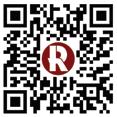
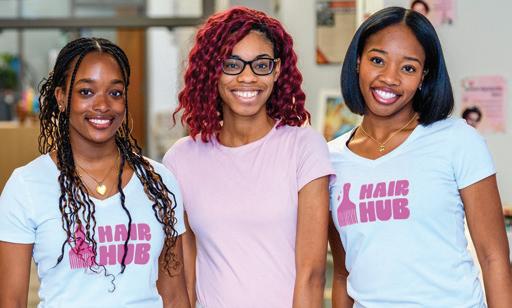
Vineet Ranade (CPE, 2025) made every second count to realize his California dreams of achieving excellence in the classroom and as a record-setting student-athlete. He completed his studies with a perfect 4.0 grade-point average, qualified for the 2025 NCAA Division III national championships in three events, was named the 2025 Division III Swimming/Diving Academic All-American of the Year by the College Sports Communications organization, and received this year’s NCAA Elite 90 award as the studentathlete having the highest cumulative grade-point average among participants at a national championship meet. Ranade also was named the 2025 Heartland Collegiate Athletic Conference Swimmer of the Year after winning an impressive seven conference titles, setting six school records, and establishing four HCAC championship meet records.

• Janaé Gillus received the Jayshree Seth Scholarship for Women of Color in STEM, created by a 3M employee to empower young women to enter STEM fields. The computer engineering student and Noblitt Scholar was featured in a story 3M published about the scholarship.
• Senior student-athletes receiving the prestigious Ruel Fox Burns Blanket Award for outstanding contributions to athletics during their playing careers were men’s athlete Vineet Ranade (CPE, 2025) and women’s athlete Jamie Baum (CE, 2025). The Athletics Department also presented other end-of-the-year awards to Simon Blair (ME, 2025) and Jacob Durenberger (ME, 2025), Jess Lucas Spirit Award; Jillian Gregg (BE, 2025) and Miles McGowen (CHE, 2025), Sam Hulbert Award; Kaylee Lane (MA, 2025), Vineet Ranade (CPE, 2025), Josh Schrock (CPE, 2025), Mark Serdinak (ME, 2025), Blaise Swartwood (CS, 2025) and Sam Walsh (BSSE, 2024/MSEMGT, 2025), John A. Logan Award; Cate Stauffer (ME, 2025) and Andrew Toler (CHE, 2025), Varsity R Club Outstanding Senior of the Year Award
• Heath Doll (BSCHE/MSEMGT, 2025) was one of 74 college seniors nationally recognized as a 2025 Robert E. Orr Fellow, a two-year paid entrepreneurial development program for versatile high-achievers and future-focused businesses in Indianapolis and Evansville, Indiana.

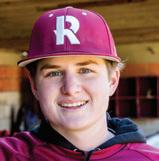

Alumna Nola Wilson (BE, 2023) and students Uche Osuji, Narindwa Semakula , and Jada Hunter-Hays (CPE, 2025) are weaving entrepreneurship and empowerment for Black women through their new app, Hair Hub. Designed to be a budget-friendly alternative to professional styling, Hair Hub consolidates all the resources needed to learn how to style hair into one platform. Launched in September 2024, Hair Hub helps Black women manage and take pride in the texture of their hair. Osuji and Semakula won a pitch competition at the National Society of Black Engineers regional conference.
Learn more about Hair Hub at bit.ly/40klZGR
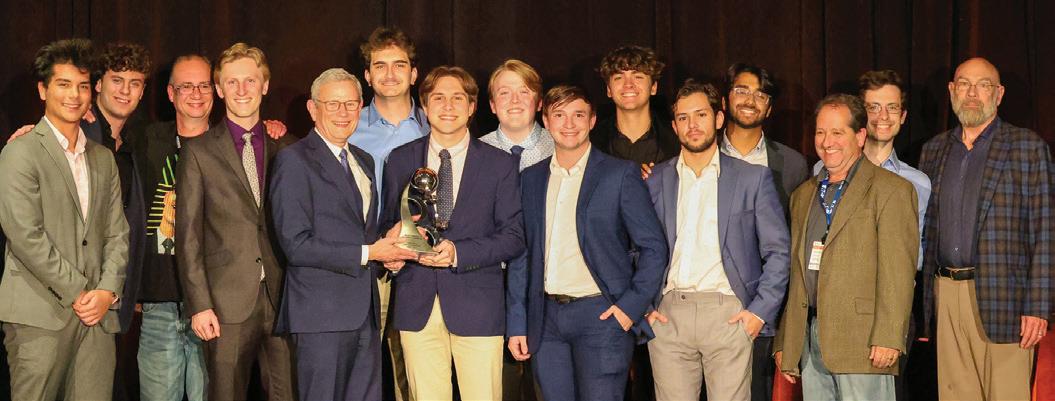
A team consisting of Rose-Hulman and Ivy Tech Community College-Terre Haute students earned third place overall honors and several leading technical awards in the second year of the three-year Battery Workforce Challenge, the nation’s premiere collegiate competition in battery manufacturing and workforce development.
At the year-end competition in Indianapolis the 12 competing teams were evaluated on their ability to build and test a team-designed module for an electric vehicle battery pack to be integrated into a competition vehicle, a 2024 Ram ProMaster commercial electric van donated from Stellantis.
The Battery Workforce Challenge is a public-private partnership and North American collegiate engineering competition, managed by Argonne National Laboratory in collaboration with the U.S. Department of Energy and sponsored by Stellantis.
During the competition’s second year, students were challenged to fully design and develop battery architecture, including a battery module, battery disconnect unit (BDU), and software architecture. Teams received industry expert support in the form of design reviews to help elevate students’ understanding of the battery design process.
In Indianapolis, teams presented their module, BDU, and Hardware-inthe-loop (HIL) to a panel of industry subject matter experts in each field. Teams made up of a North American university and a vocational school partner were each judged on module design progress, project management, and market development and communications.
The Rose-Hulman/Ivy Tech team received $12,500 in awards from placing third overall, demonstrating the best battery module design, demonstrating the best use of Geometric Dimensioning and Tolerancing in the team’s BDU design and fabrication. Other awards were for having Best Green Garage Blog and being the best team utilizing the RASIC Project Management tool.
Rose-Hulman/Ivy Tech Team Project Manager Jack Martin, a mechanical engineering senior, noted that “our team is the only all-undergraduate in the competition, with most other teams being led by PhD and full-time master’s-level students.”
The team’s faculty advisers are Zac Chambers (BSME, 1994/MSME, 1996), PhD; Marc Herniter, PhD; and Nathan Brooks (EE, 2016), PhD.
• A team of civil engineering students qualified for this year’s national Steel Bridge competition after earning first-place honors at the American Society of Civil Engineers Indiana-Kentucky Symposium. Team members designed and fabricated parts of their structure, and during the competition, acted as human cranes to rapidly assemble their 400-pound bridge in approximately 18 minutes. The bridge successfully carried 2,500 pounds.
• Mathematics students placed first and third among 18 teams among 11 institutions in this year’s Indiana Collegiate Mathematics Competition Finishing first was the team with Nathan Chen, Justin Chan, and Zach Whelan while the third-place team had Thor Catteau, Connor Lane, and Connor Tasik . Meanwhile, a team of 11 students placed among the top 10% of problem solvers participating in the 2024 William Lowell Putnam Mathematics Competition, the nation’s most prestigious mathematics competition for undergraduates. Individually, Lane placed within the top 200 of 3,988 students taking the exam.
• A group of computer science and mechanical engineering students advanced to the final round of the prestigious NASA Lunar Autonomy Challenge, developing advanced software to guide a simulated lunar rover across a virtual moon environment. The team was among the top 10 competitors—— joining MIT, Harvard, Stanford, Carnegie Mellon, and Johns Hopkins—from an original list of 31 colleges and universities.
• Seven Rose-Hulman student teams competed in this year’s Crossroads Classic Analytics Challenge, an annual academic competition that brings together undergraduate and graduate students from top Indiana schools to solve real-world business challenges through data analytics. This year’s challenge was analyzing data related to the NCAA Division I Basketball Championship bracket challenge. Learn more about Rose-Hulman’s Battery Workforce Challenge team at bit.ly/4eio3VD
STORY BY DALE LONG PHOTOS BY BRYAN CANTWELL
tudents in Rose-Hulman’s unique Engineering Design program aren’t coming up with ways to build a better mouse trap. Rather, they’re using creative studio experiences to apply elements of design, prototyping, testing, and professional skills to develop creative client-focused products that are making a difference in other’s lives and opening career opportunities in industry and graduate schools across the country.
Engineering Design’s human-centered approach has forged new ground in engineering education since its introduction in 2018. It achieved accreditation status for meeting quality standards from ABET’s Engineering Accreditation Commission, and the organization bestowed its prestigious Innovation Award on the program for

bringing new dimensions to improve students’ technical educational experience.
“We didn’t start out trying to develop reflective engineering (bringing the power of introspective to innovative minds) but it has been an excellent byproduct,” says program director Patsy Brackin, PhD. “Our students are striving to create better places and leave a positive effect in everything they do.”
That’s what happened when students designed and constructed Kala’s Floating Seat, a device that allowed 3-year-old Kala Steiner to take her first steps in learning to swim and compete in the Indiana Summer Olympic Games in the spring and summer of 2019.
There’s also the lightweight and fashionable Good Vibes jacket that through haptic devices and other technology allows users to “feel” music being played at a concert, on the radio, or by an audio player. The jacket, developed in 2024, could enable music to be more assessable to those with auditory impairments.
And there’s the Bigger, Better Battleship Game, Mix-and-Match Rosie, Sentence Stacker, and Push ‘n Go Mower that’s
Life-changing and innovative projects have

a
among the more than 75 specially designed toys designed, developed, and tested by student teams over the past 10 years for Reach Services’ lending library to help the community organization expand the motor and cognitive skills of children with special needs.
These experiences paved the way for Grace Eggers (ENG, 2024) to work in the Makers Program with the Illinois Assistive Technology Program. She is a product engineer who designs free custom products, using assistive technology, for people in Illinois with disabilities. “Through the
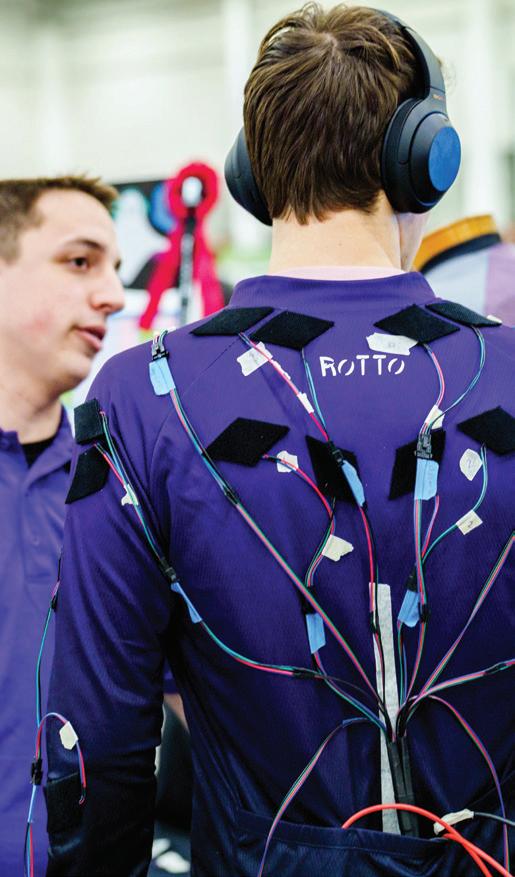
Engineering Design program, I was able to learn how to communicate and collaborate with clients to ensure I have a good relationship with them to get them a product that is useful,” she says. “Knowing how to ask the right questions to the client and design based off that information is really important. I want to make sure I give them a product that works, and the best way to do that is understanding them.”
The Engineering Design program prepares students for careers by giving them six intensive design experiences, from their first class on campus to the senior year, with real clients on authentic design experiences and opportunities to practice their professional skills. Three first-year design labs in the Fowler Academic Building introduce students to a broad understanding of modeling systems across disciplines and repeated practice in prototyping solutions for clients.
Along the way, students select one of seven concentrations (covering biomedical engineering, computer science, electrical and computer engineering, entrepreneurship, manufacturing, robotics, and software engineering) as they continue to explore deeper into the design process. Second-year students also learn the process of on-boarding into existing projects as they work with seniors one quarter and first-year students another.
The third year has students participating in two 20-week practicums, gaining professional work experience within the design process. There are also opportunities for students to study-work abroad and have extensive cooperative work experiences. Then, everything culminates with a senior year in which students use their technical
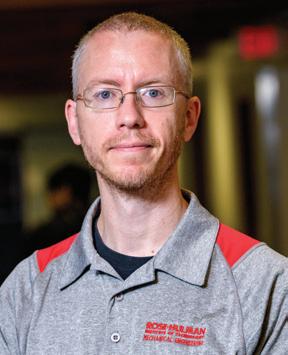
The 2025-26 school year will bring new leadership to the Engineering Design program as longtime mechanical engineering professor Jay McCormack, PhD, replaces Patsy Brackin, PhD, as program director. Brackin will remain as a professor within the program and mechanical engineering department.
McCormack, a member of the Rose-Hulman faculty since 2013, was part of the original Rose Reimagined team that conceptualized the Engineering Design program in 2015. He also served on the program’s steering committee, was part of the team that designed and delivered the original and revised versions of two studio design courses and has taught in each of the three defining course types in the program.
“I love that Engineering Design engages students that sometimes miss or are missed by engineering, that the program is multidisciplinary,” he says.
McCormack has taught classes in design and manufacturing while coordinating multidisciplinary capstone design projects at Rose-Hulman. He earned bachelor’s, master’s, and doctorate degrees in mechanical engineering from Carnegie Mellon University.
See some of the projects Engineering Design students have completed at rose-hulman.edu/engineeringdesign
electives and participate in a yearlong multidisciplinary capstone design experience to prepare for professional practice.
“Engineering Design’s program is a human-centered endeavor for creative thinkers who want to get busy learning by doing in a hands-on, immersive educational experience,” remarks Brackin. She points out that the program’s mission is to graduate students who embrace the ambiguity of design, tackle projects with gusto, commit to professional and ethical responsibilities while remembering global, social, economic, and environmental considerations, communicate respectfully and effectively, and create in collaborative and inclusive teams.
Engineering Design graduates have gone on to work in industry with such companies as Raytheon Missile Systems, Milwaukee Tool, Endress+Hauser, and Resultant. They also have started their own entrepreneurial enterprises and are attending graduate schools throughout the country.

“ I was drawn to Engineering Design because it was a program that promoted the development of every key skill necessary to oversee the launch of a successful project, from technical to humancentered design to people and entrepreneurial skills.”
JESUS CAPO (ENG, 2023) GE Appliances’ Edison Engineering Development Program Member
Jesus Capo (ENG, 2023) is currently in GE Appliances’ Edison Engineering Development Program, learning how to implement Wi-Fi hardware technology into home appliances— applying technical skills in circuit design, programming, mechanical engineering principles, Computer Assisted Design modeling, and experimental testing methods and statistics. He is also studying for a master’s degree in electrical engineering.
“I was drawn to Engineering Design because it was a program that promoted the development of every key skill necessary to oversee the launch of a successful project, from technical to humancentered design to people and entrepreneurial skills,” he says. “The best aspect of Engineering Design is the holistic focus on all aspects of successfully bringing an idea to life.”
The opportunities to complete hands-on client-based projects that produce students with dynamic project portfolios are a key program asset, according to several recent Engineering Design alumni.
Meanwhile, Caleb Boutell (ENG, 2023) saw Engineering Design as a program that could apply his creative and problem-solving skills in a multitude of practical design in class and through the yearlong industry
practicum. He now is a research and design engineer with IMI Norgren. “The minimum of nine months industry experience by graduation is a game-changer. By the time I was hunting for a real job, I had seen four different companies with their own products, workflows, and cultures, which helped me stand out as an applicant,” he says.
As a new product engineer with the Jasper Group, Jackson Kabrick (ENG, 2024) is aligning designwith-manufacturing capabilities, through using rapid prototyping and structural and material analysis, and presenting concepts to internal stakeholders. These are valuable lessons learned throughout the Engineering Design program.

“Engineering Design gave me the flexibility to explore multiple paths, while still gaining a solid technical foundation. It was the best option for developing a broad engineering skillset while also participating in real-world, projectbased experiences. The best aspect of the Engineering Design program was its emphasis on project-based learning. I had the opportunity to collaborate with classmates on real, practical challenges, and I learned to communicate with people from a variety of technical and non-technical backgrounds,” he remarks. n
“ I couldn’t imagine a better way to learn than by directly working with users of my design and creating something which impacted their lives positively.”
SOPHIE BAER (ENG, 2023) Systems Engineer in Aerospace & Defense Industries
Mechanical engineering professor and Engineering Design program director Patsy Brackin, PhD, has been recognized with the distinguished Kate Gleason Award from the American Society of Mechanical Engineers Foundation, for her outstanding contributions to the engineering profession. She received the award during the foundation’s Reinventing the Future 2025 event in Washington, D.C.
The Gleason Award was established in 2011 by the ASME Foundation to annually honor a female engineer who has had a lifetime of achievement in the engineering profession or is a highly successful entrepreneur in the field of engineering. Kate Gleason was the first woman welcomed into the ASME organization as a full member, paving the way for other women to enter and thrive in the field of engineering.
Brackin, a member of the mechanical engineering faculty since 1995, started the Institute’s groundbreaking Engineering Design program in 2018, which achieved accreditation status in 2023 and received ABET’s Innovation Award in 2024. She earned distinction as an ASME Fellow in 2016 and an ABET Fellow in 2020, two of the engineering profession’s highest honors.
• Veteran and award-winning educators reappointed academic department heads are Kimberly Henthorn (CHE, 1999), PhD, of the Department of Chemical Engineering and James Hanson, PhD, of the Department of Civil and Environmental Engineering. Both have earned the Dean’s Outstanding Teacher Award, Henthorn in 2023 and Hanson in 2012.
• Associate Professor of Civil and Environmental Engineering Michelle Marincel Payne, PhD, has been recognized as an Indiana Academy of Science Fellow for her service to the organization, advancement of science in Indiana, and achievements in scientific research. She also will become the Roland E. Hutchins Endowed Chair in Civil Engineering on September 1.
• Mathematics Professor John Rickert, PhD, received the Distinguished University Teaching of Mathematics Award from the Mathematical Association of America’s Indiana Section.
• Associate Professor of Civil and Environmental Engineering Jennifer Mueller, PhD, will begin a two-year term as the Alfred R. Schmidt Endowed Chair for Excellence in Teaching. She will use sustainable design and systems thinking to educate future engineers, scientists, and mathematicians for a changing world. This endowed faculty chair was established by G. Felda Hardymon (MA, 1969) in honor of Alfred Schmidt (ME, 1949).
• Lawrence J. Giacoletto Endowed Chair and Professor of Electrical and Computer Engineering Carlotta Berry, PhD, received the Electrical and Computer Engineering Department Heads Association (ECEDHA) Community Development Award.
• Professor of Biology and Biomedical Engineering Alan Chiu, PhD, has been reappointed as the Samuel F. Hulbert Endowed Chair in Biomedical Engineering. He will concentrate on advancing the application of SSVEP braincomputer interfaces in virtual- and mixed-reality environments.
• Endowed Chair for Innovation in Science, Engineering, and Mathematics and Professor of Mathematics Wayne Tarrant, PhD, Wayne Tarrant, has been placed on the Fulbright Specialist Roster through April 2028. He is eligible to be matched with short-term academic or professional projects at institutions in more than 150 international countries.
• Associate Professor of Physics, Optical Engineering, and NanoEngineering Syed Azer Reza, PhD, will be the first Bruce R. Danner Endowed Faculty Fellowship in Physics, Optical, and NanoEngineering. He will concentrate on optical and quantum imaging systems. This new fellowship was established by Michael Huhnke (PH/ME, 1975) and his wife, Karen, to honor Danner, a professor for 30 years. (learn more about this fellowship on page 27 )
• The Athletics Department recognized the following staff members for their dedication to the department and student-athletes: Jim Bertoli, senior major gifts officer, Office of Institutional Advancement, and Nick Sanders, audiovisual lead, Office of Enterprise Information Technology, with the John Mutchner Award; and Amy Simonson, purchasing and operations manager, Office of Financial Affairs, with the Rosie Award.
• Kathy Hammett, chief director of the Center for Global Engagement, has been appointed to the Board of Directors for NAFSA: Association of International Educators. She has more than 35 years of experience in international education.
• Faculty/staff retirements during the last half of the 2024-25 academic year included Dale Long , executive editor of Echoes and director of media relations, after 37 years of employment; Sheryl Fulk , associate director of the bookstore and mail services, after 29 years; Jianjian Song , PhD, professor of electrical and computer engineering, after 27 years; and Patti Hoffa, office manager with Rose-Hulman Ventures, after 17 years.

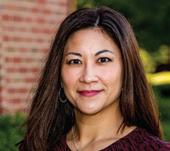

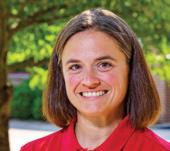
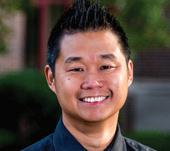
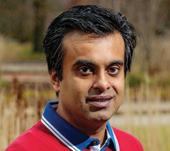
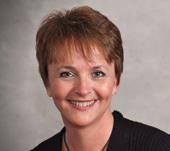
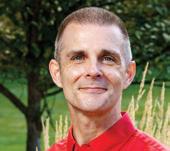

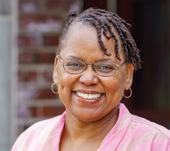

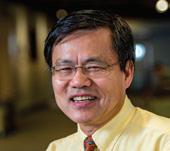
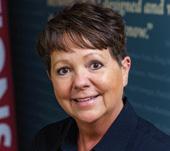
BY PROFESSOR EMERITUS HERB BAILEY
The Bailey Challenge’s popularity continues to grow with 123 solvers being submitted for the winter problems. The list has alumni from 48 different graduating classes, along with friends and family of alumni, including Herb Bailey’s daughter, Carol, and Antwerp High School (Ohio) math teacher Cord Ehrhart, engineering students at other colleges, and former and current Rose-Hulman professors. This summer’s challenges compiled by Associate Professors of Mathematics Tim All, PhD, Sylvia Carlisle, PhD, and John McSweeney, PhD. They are alternating in composing problems for issue with Bailey’s son, Mark Bailey (CHE, 1976).
SUMMER PROBLEM 1 There are three different up/down light switches that operate kitchen lights in a house. Each flip of any switch changes the state of the kitchen lights. When the homeowner left to walk the dog, the kitchen lights were off and all three switches were in the down position. While gone, other family members may come in and out of the kitchen, using any of the three light switches to turn the lights on or off. Is it possible that upon the owner’s return that the kitchen lights will be off, but all three of the switches could be in the up position?
SUMMER PROBLEM 2 Suppose that the rules of American football were simplified so that a team could only score three-point field goals or seven-point touchdowns at a time. For example, a total score of 26 can be achieved by four field goals and two touchdowns: (4 x 3) + (2 x 7) = 26, but a total score of 5 can never be achieved. What’s the largest number that cannot be achieved as a total score? If you can figure this out, what would be the largest non-achievable score if the points came in increments of 77 and 100?
SUMMER PROBLEM 3 Suppose you have an unlimited supply of 1-inch, 2-inch, 5-inch, and 11-inch pieces of wood. I want to take exactly four pieces and glue them end-to-end to form a larger piece. How many different total lengths can you form by this process? For example, one possible length is 22 inches, since 22 = 1 + 5 + 5 + 11. Note that you need to take four pieces total, but you can take multiple (or no) pieces of any given length. (If this problem seems like it wouldn’t be too relevant to a carpenter, we wouldn’t argue, but it’s fundamental to the statistical process of bootstrapping.)
WINTER PROBLEM 1 SOLUTION From Ryan Oberlitner (CPE, 2020)
Let b, c, d be the number of birds, cats, and dogs, respectively. Then the count of heads gives us the equation 15 = b + c + d, the count of legs gives 42 = b + 3c + 4d, and the count of tails gives 13 = 2b + c. Now we have a system of three equations with three unknowns.
Multiply the first equation by 4 and subtract the first equation to cancel out d: 15 = b + c + d - >60 = 4b + 4c + 4d - >60 - 42 = (4b+4c+4d) - (b+3c+4d) ->18 = 3b + c
Now subtract the third equation from the result of the previous step to cancel out c (could also rework and cancel out b instead, so we can solve for the answer here, but I didn’t): 13 = 2b + c - >18 - 13 = (3b+c) - (2b+c) - >5 = b
Now we know b, plug it into one of the previous equations to solve for c:
13 = 2b + c - >13 = 2 x 5 + c - >13 = 10 + c - >3 = c
There were 3 cats (as well as 5 birds and 7 dogs)
WINTER BONUS SOLUTION From Wolfgang Pelz (MA, 1971)
Using the base x height formula a triangle area: Area of ACD = 28r/2
Area of ABD = 35r/2 (using the Pythagorean Theorem for a right triangle to get the hypotenuse)
Area of BCD = 21(5r)/2
Area of ABC = (21)(28)/2
Combining gives 28r + 35r + 105r = 588 or r = 3.5
The additional black lines are radii (r) of the circles. The additional red lines form three triangles using the sides of the original triangle: ABD, ACD, and BCD. Note that the areas of the three smaller triangles add up to the area of the larger triangle. Also, the horizontal line segment through D has length 5r.
Suppose the triangle Let L, M, and N be the midpoints of AB, BC, and CA, respectively. Shade in the “middle triangle” repeat this process indefinitely starting with the “upper triangle” the total area of the shaded region?
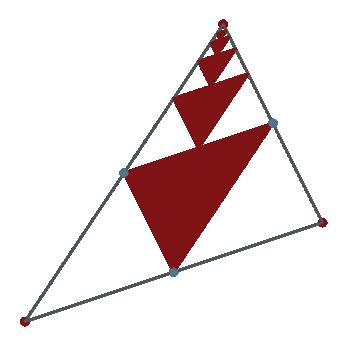
From John Marum (EE/MA, 1983)
8” x 8” x 8” cube cut into 1” cubes is 8 ^ 3 1-inch cubes = 512
Three sides painted are all the corners, or 8
Two sides painted are edges, not including corners, = 12 edges x 6/edge = 72
One side painted are faces, not including edges and corners = 6 faces x 6 x 6 = 216
No sides painted is the 6 x 6 x 6 cube internal or another 216
Check: 8 + 72 + 216 + 216 = 512
Send your solution to BaileyChallenge@rose-hulman.edu or to: Communications & Marketing, CM 14, Rose-Hulman Institute of Technology, 5500 Wabash Ave., Terre Haute, IN 47803. Alumni should include their class year.
Congratulations to the following solvers of the winter problems:
ALUMNI: C. Ambuehl, 1958; R. Checkley, 1961; L. Hartley, 1961; J. Ray, 1961; J. Tindall, 1961; R. Lovell, 1963; A. Cleek, 1964; B. Radecki, 1965; P. Carter, 1966; J. Andis, 1968; T. Wellings, 1968; R. Dutton, 1969; E. Arnold, 1971; R. LaCosse, 1971; W. Pelz, 1971; S. Sample, 1971; D. Dvorak, 1972; G. Houghton, 1972; C. Martens, 1972; H. Young, 1972; R. Collins, 1973; R. Kominiarek, 1973; M. Marinko, 1973; J. Walter, 1973; J. Zumar, 1973; D. Frick, 1974; T. Rathz, 1974; S. Sims, 1974; D. Willman, 1974; M. Clodfelder, 1975; R. Ditteon, 1975; P. Eck, 1975; R. Herber, 1975; S. Bryant, 1976; B. Hunt, 1976; J. Schroeder, 1976; A. Roberts, 1977; D. Hoffman, 1978; P. Hahn, 1979; R. Priem, 1979; J. Slupesky, 1979; R. Joyner, 1980; J. Koechling, 1980; B. Krehely, 1980; L. Smith, 1980; S. Stroder, 1980; J. Farrell, 1981; P. Gunn, 1981; S. Nolan, 1981; R. Roll, 1981; M. Taylor, 1982; D. Batta, 1983; S. Hall, 1983; J. Marum, 1983; K. Shafer, 1983; B. Ley, 1985; C. Wilcox, 1985; C. Hastings, 1986; J. Short, 1986; B. Wright, 1986; D. Johnson, 1987; M. Lancaster, 1987; C. Abdnour, 1989; L. Cox, 1989; J. Jachim, 1989; E. Cegielski, 1990; J. Harrell, 1990; B. Stelle, 1990; B. Burger, 1991; S. Cox, 1991; J. Harris, 1991; R. Hochstetler, 1991; C. Schlimm, 1991; R. Wilkinson, 1991; J. Zamora, 1991; P. Poor, 1992; B. Swanson, 1992; R. Antonini, 1993; W. Haas, 1993; K. Neilson, 1993; C. Ware, 1995; R. Solomon, 1996; K. Bartow, 1998; C. Mills, 1998; M. Pilcher, 1998; J. Mathison, 1999; K. Beto, 2000; J. Macak, 2000; D. Helms, 2002; D. Shafer, 2003; J. Somann, 2004; S. Tourville, 2005; V. Roczniak, 2006; T. Homan, 2007; B. Shover, 2008; G. Shields, 2008; D. Schoumacher, 2010; M. Schoumacher, 2010; M. Rooney, 2011; B. Lackey, 2013; M. Peterson, 2018; M. Hawksworth, 2020; R. Oberlitner, 2020; P. Liberge, 2021; and J. Ansari, 2023 FRIENDS/STUDENT: C. Bailey, D. Bremmer, T. Cutaia, A. Danesh-Yazdi, C. Ehrhart, S. Hahn, J. Kulbago, L. Kulbago, T. Kulbago, M. Lane, J. Marks, L. Metcalfe, Eric Robertson, J. Robertson, L. Tutt, N. Weber, J. Walsh, and S. Webster
The number above anchored by dashes has been used by journalists in the U.S. for more than a century, signifying the end of the story. For Dale Long’s remarkable run as executive editor of Echoes, this issue represents his own “-30-.”
Dale officially retired on June 30, following a distinguished 37-year career at Rose-Hulman, and one of his final acts was sending this print edition to press——a fitting bookend to a career defined by storytelling, stewardship, and an encyclopedic knowledge of Rose-Hulman’s history.
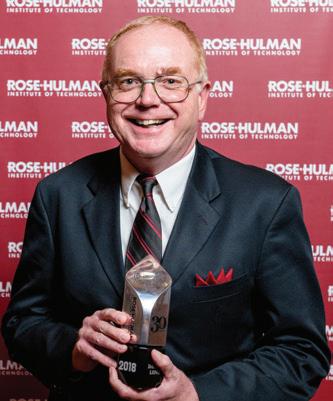
Since arriving in 1989 as Assistant Director of College Relations, a job that included the role of Sports Information Director, Dale evolved into a masterful media-relations strategist and the guiding hand behind Echoes. Along the way, he chronicled the achievements of students, alumni, faculty, and staff with equal measures of rigor and heart——whether following the Solar Phantom race car team across the country or helping welcome future STEM professionals and Rose-Hulman students through our Explore Engineering, JETS TEAMS, and National Engineering Week outreach programs. A highlight was coordinating campus and community activities as Rose-Hulman hosted the first overnight stop of the Sunrayce cross country solar car races (featuring the Solar Phantom) in 1995 and 1997. This earned him the prestigious Keystone Award from the Public Relations Society of America’s Hoosier Chapter (Indianapolis) in 1998.
Through his involvement, Echoes grew from a quarterly tabloid newsletter into a nationally recognized alumni magazine, celebrated for its depth of reporting and vibrant photography. Under Dale’s direction, the Institute’s stories found a wider audience: USA Today honored our students on its All-Academic Team; local and national outlets picked up his coverage of community-engagement initiatives like the annual Bikes for Tykes Assembly Day, which he helped coordinate for more than two decades (distributing more than 10,000 bikes to children throughout Indiana); and in 2019, Rose-Hulman named him an honorary alumnus——one of the highest tributes we could bestow.
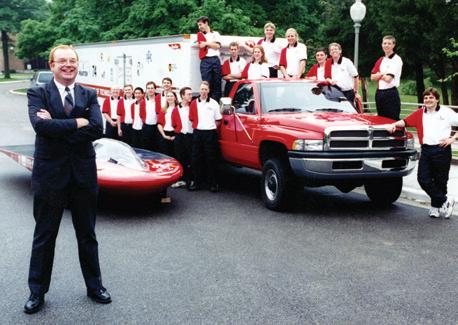
Clearly, Dale leaves behind big shoes. His deep affinity for Rose-Hulman’s legacy, paired with an unwavering commitment to excellence, cannot be replicated overnight. Fortunately, I have collaborated with Dale on Echoes for nearly a decade, learning firsthand his passion for narrative and his exacting standards.
As I step into a more prominent role with the publication, I am honored to carry forward the magazine’s tradition of thoughtful storytelling and striking visuals. Our talented team is already at work, exploring new ways to connect with you, our readers. Echoes has evolved continuously over its long history, and we remain committed to making it as relevant and engaging as ever. We invite you to tell us what you’d like to see next by taking our readership survey (page 3) and continue to share your story ideas with us at echoes@rhit.edu
As we bid farewell to Dale’s distinguished tenure, we offer our heartfelt gratitude for his dedication and best wishes for his well-deserved retirement. Here’s to honoring his legacy——and to beginning the next chapter of Echoes together. n
Paul Shepherd Chief Director,
Communications & Marketing paul.shepherd@rhit.edu
JEFF
Jeff Somers never thought he would see someone land on the moon in his lifetime. Now, NASA’s lunar return and Artemis mission are within the 1998 electrical engineering graduate’s orbit.
As the mobility test team lead at NASA’s Johnson Space Center in Houston, Texas, Somers is the engineering lead on the Ground Test Unit, a prototype designed to allow simulation of lunar rover concepts for the Artemis mission. The uncrewed Artemis I launched in 2022 and future Artemis III missions are scheduled to carry the first astronauts to land on the moon in more than 50 years.

“The Ground Test Unit is a development vehicle that we can use to see how rovers will work on the moon,” Somers says.
“It is an asset that we can use to understand how to evaluate rover designs and develop test criteria and give us a chance to practice on a vehicle.”
It’s a bit of a divergence from his usual role in the Human Physiology, Performance, Protection and Operations (H-3PO) Laboratory—Somers stepped into the new project as part of NASA’s rotation program that allows people to explore different parts of the organization.
“I’ve had to put my electrical engineering knowledge back to the test,” he laughs during an interview. “I still really love electrical engineering, but I got into biomedical engineering, which I love in a different way.”
to Once Again
STORY BY KIMMIE COLLINS
After graduating from Rose-Hulman, Somers earned his master’s in biomedical engineering in 2000 from Case Western Reserve University, where he worked in a lab of a neurologist. The lab dealt with NASA in researching the vestibular system, including causes of motion sickness. Somers amazed himself when he accepted a job at a NASA contractor after graduation, working on a team that invented glasses to reduce the risk of motion sickness.
Somers spent several years working closely with SpaceX and Boeing on their respective Crew Dragon and Starliner vehicles as part of America’s Commercial Crew Program to carry astronauts to the International Space Station (ISS). His lab also worked on exercise physiology in space, creating exercise equipment for astronauts on the space station to counteract the physical changes that accompany space travel. Due to ISS’s constraints, the heavy equipment presents an engineering challenge.
“I liken it to if you were asked to do jumping jacks in a rowboat in the middle of the lake and not make waves in the lake,” he explains.
As part of his role in the H-3PO Laboratory, Somers’s team developed an exploration atmosphere to help astronauts prepare for extravehicular activity during Artemis missions. If a lunar lander were to use Earth atmosphere in the cabin, astronauts would need to breathe 100% oxygen for up to seven hours before exiting to the lunar surface, or risk decompression sickness (the bends). The exploration atmosphere cuts that time to just 20 minutes.
Somers also specializes in spacesuit physiology and injury biomechanics and has published articles, including NASA Tech Memos, about safety tests and specifications to reduce the risk of injury.
“One of the things we had to come up with was how do you define what probability of injuries is okay?,” says Somers.


Now, Somers remarks that NASA is developing more simultaneous projects than ever before, creating unique opportunities for innovation in the space industry.
“I didn’t think I’d ever work [at NASA], growing up in the Midwest,” he says with a grin. “I’m a huge space nerd. I love space. The first few months I just couldn’t believe that I worked here.”
Somers carries that joy and childlike wonder with him now, reinvigorated by the eager faces of visitors touring the Johnson Space Center and walking directly over his desk.
He’s also earned one of NASA’s most prestigious awards. Named after PEANUTS creator Charles Schulz’ fascination with NASA and selected by a team of astronauts, the Silver Snoopy is presented to fewer than 1% of NASA employees for their outstanding service to a spaceflight crew. The 2013 honor recognized Somers’s work in spaceflight injury biomechanics.
His proudest career accomplishment, though, has been his work in improving the safety of the Boeing Starliner and SpaceX Crew Dragon vehicles.
“Those vehicles have aspects that I personally changed and fought for,” he states. “There are aspects of both vehicles that I made safer personally.”
Somers’ work on the commercial crew program earned Somers NASA’s Exceptional Engineering Achievement Medal, awarded for significant advancements that demonstrate results that are far above others in quality, scope, or impact, according to NASA’s website.
His expertise is shaping both history and discovery, landing astronauts both safely on the moon and back on Earth. The initial small steps Somers took at Rose-Hulman are creating giant leaps across the night sky, soaring with Snoopy across the vast expanse of space. n

“ I didn’t think I’d ever work [at NASA], growing up in the Midwest. I’m a huge space nerd. I love space. The first few months I just couldn’t believe that I worked here.”
— JEFF SOMERS (EE, 1998)
Engineering Lead, NASA’s Ground Test Unit Johnson Space Center


The association’s highest alumni award recognizes exceptional achievement in any field and service to society.
Charles Clancy, PhD
Computer Engineering, 2001
This technology leader, entrepreneur, and researcher is dedicated to advancing global security and emerging technology. He is chief technology officer and senior vice president for MITRE Labs, leading more than 4,000 scientists and engineers tackling critical national challenges. His work has influenced U.S. technology policy in cybersecurity and Artificial Intelligence.


The Alumni Association has bestowed special honors to alumni, faculty, staff, and a student in recognition of their accomplishments that have brought honor and distinction through their outstanding career work and dedicated volunteer efforts to their communities and the Institute.

Watch the 2025 Alumni Awards ceremony at rb.gy/hoj7e3


This honor highlights alumni whose professional achievements have brought distinction to themselves, credit to Rose-Hulman, and benefit to their communities.
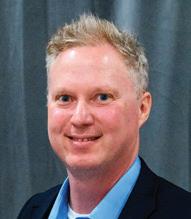
Christopher Bauer
Civil Engineering, 2001
A seasoned construction management professional, Bauer has led large-scale commercial projects for Hunt Construction and AECOM Hunt across the U.S. His extensive portfolio includes sports projects such as the Los Angeles Dodgers Stadium reconstruction and terminal additions to Louis Armstrong’s New Orleans Airport and, currently, New York City’s John F. Kennedy Airport.


Raymond Lepp
Mechanical Engineering, 1963
A lengthy and rewarding career revitalizing underperforming steel production divisions had Lepp transforming a struggling Seattle steel plant into an award-winning facility and leading the launch of a galvanized steel plant developed in partnership with Nippon Steel. He retired after leading Ryson Global Solutions as president and chief executive officer.
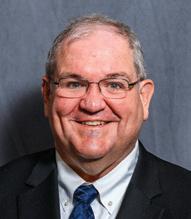
Doug Tougaw, PhD
Electrical Engineering, 1991
An accomplished educator, researcher, and leader in the field of engineering education, Tougaw is dean of engineering at Valparaiso University. His research has led to 75 peer-reviewed publications and a patent in quantum computing technology. He has also served as president of the American Society for Engineering Education.

Recognizing alumni who have achieved significant success in their first 10 years after graduation in the areas of career achievement, community service, and dedication to Rose.
Nick Birch
Mechanical Engineering, 2014
A passionate entrepreneur and technology leader dedicated to innovation and workforce development, Birch is leading United Airlines’ Technology Institute, overseeing technical training for 2,500 global employees. Previously, he founded multiple businesses, including Eleven Fifty Academy, a technical career training bootcamp, along with a software consulting firm and an ed tech software company.

Recognizing alumni employees whose work elevates Rose’s mission, strengthens alumni-Institute connections, and advocated lifelong relationships with the Institute.
Erik Hayes
Mechanical Engineering, 1997 (B.S)
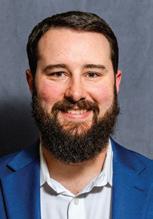
Honoring alumni who have donated significant time in their volunteer efforts to Rose, toward STEM education advancement, in professional/industrial groups and organizations, and within their community.
J. Corie Biggs
Electrical Engineering, 1990
More than three decades of energy sector experience has Biggs serving as engineering supervisor with Marathon Petroleum Corporation after being operations manager with Hoosier Energy Rural Electric Cooperative. He has led Marathon’s campus recruiting efforts since 2009 and has had community service activities in the Palestine, Illinois, area.
Ashvin Lad
Chemical Engineering, 1996 (B.S.)
Biomedical Engineering, 1998 (M.S.)
Lad has built a diverse career spanning health care, public service, hospitality and tourism, and renewable energy. He currently serves as director of health system and group partnerships with the American Medical Association. His dedication to Rose has included serving as an alumni representative to the Board of Trustees and a class reunion chair.
Tiffany (Blandin) Trusty
Electrical Engineering, 1997 (B.S.)
Engineering Management, 2007 (M.S.)
A digital health and software product development leader with nearly 30 years of experience, Trusty supported the launch of Eli Lilly and Company’s digital health organization that’s focused on improving health care outcomes. She is a dedicated women in STEM advocate and is passionate about ensuring that women in STEM feel seen, heard, and empowered.
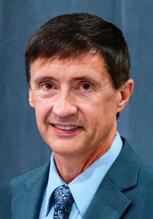
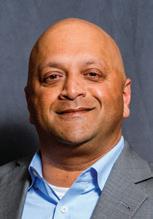



Mechanical Engineering, 2001 (M.S.)
As vice president of student affairs and dean of students, Hayes has fostered student success and built a vibrant campus community through development of Rose’s current housing model, pioneering gender-inclusive housing, and been a key contributor to a multi-college initiative focused on improving student mental health resources.

Recognizing an outstanding student who exhibits excellence in academics and character while demonstrating a strong commitment to Rose’s initiatives.
Elley Adkins
Civil Engineering, 2025
Inspired by her mother’s selflessness, generosity, and resilience, Adkins was deeply involved in campus leadership and student life. She helped organize the annual “Rock Out for Rosie” campus event, supporting childhood diabetes research, and Alpha Omicron Pi sorority’s Mr. Rose, benefiting the Arthritis Foundation.

Honoring faculty and staff members for demonstrating strong and selfless commitment to the Institute, professional achievement, and dedication to the betterment of their respective departments.

Nate Chenette, PhD Associate Professor of Computer Science & Software
Engineering

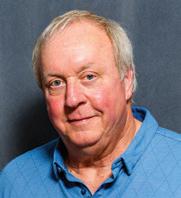
Brad Noffke Lab Technician Engineering Design Program
Charles E. Webb (EE, 1967) has been selected for inclusion in Marquis Who’s Who list for his career and personal accomplishments. He has been the president of The Webb International Group since 2009 and previously had leadership roles with WESCO Distribution Inc., International Tool & Equipment Group, International Strategies, and Aearo Corporation.
Marshall Goldsmith (BSECON/MA, 1970/MSENG, 2023), PhD, has founded 100 Coaches, a community comprising of leading executive coaches, consultants, speakers, authors, and nonprofit organization leaders.
Gary L. Bullock (EE, 1975) is chief technology officer with Pierce Aerospace, which was featured in the Indianapolis Business Journal’s 2025 Innovation Issue as one of central Indiana’s top 25 fastest growing startups. He has helped the company develop technology that allows government and commercial users to detect, track and identify drones.
Nicholas M. Ryan (CE, 1975), founder and executive chairman with Marquette Companies, was recognized among the 2024 Who’s Who in Real Estate by Crain’s Chicago Business.

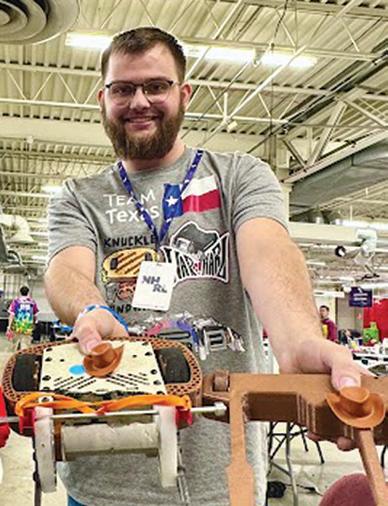
R. Neil Irwin (CE, 1963) has received a distinguished service award from the Greater Phoenix Economic Council for his steadfast leadership of revitalization efforts for downtown Phoenix and other service to the community. He served the region on GPEC’s executive board for the past two decades, helping shape the city into a global business destination. Irwin recently retired as a partner with Bryan Cave Leighton & Paisner LLP, a global law firm, and was recognized by the Arizona Bar Association for his 50 years of service to the legal community. He also continues giving back to Rose-Hulman as a member of the Alumni Advisory Board.
Warren L. Mickens (BSME, 1977/HDENG, 1999) has been reappointed to a three-year term on the governing board of the First Responder Network Authority, overseeing a public safety broadband network that’s helping first responders across the nation.
Terry F. Peak (CHE, 1979) is vice president of landfill operations with Sagepoint Energy, a leading provider of waste-to-energy solutions. He formerly was a vice president with Kinder Morgan and chief operating officer with ProLiance Energy and Kinetrex Energy.
Since bringing his robotics and engineering experience to the Discovery Channel’s “BattleBots” TV show, Peter J. Garnache (ME, 2020) placed first and third with two combat robots in the National Havoc Robotics League’s 2024 World Championships, finished second in the 2024 International Robot Contest in Seoul, South Korea, and won a NHRL competition in the United States. When he’s not competing, Garnache is a senior mechanical engineer for Vex Robotics in Greenville, Texas. Vex is the largest provider of educational robotics and curriculum in the world. They also run the largest robotics competition in the world.
Learn more about Peter’s robotics victories at bit.ly/42XFxmf


Fred M. Cartwright (ME, 1980) retired after spending three years as president and chief operations officer with Conexus Indiana, helping establish Indiana as a leader in advanced manufacturing and logistics.
Rick J. Earlywine (ME, 1982) is enjoying a second career as chief executive officer with Kelvix, a LED lighting provider. This follows his retirement from senior leadership roles with Acuity Brands/Lithonia Lighting.
Greg L. Gibson (BSCE, 1984/HDENG, 2017) was honored as one of the 2025 Indiana Living Legends by the Indiana Historical Society for his local, statewide, and national accomplishments. He has spent decades implementing ways to revitalize Terre Haute, his hometown, and Indiana, and has had success in a variety of business ventures. Gibson is also secretary of the Rose-Hulman Board of Trustees.
Rod G. Schrader (CE, 1984) has retired as chairman and chief executive officer with Komatsu America Corporation after having a variety of production and leadership roles with the company, starting in 1987.
Don W. Lincoln (PH/MA, 1986), PhD, received the 2024 Klopsteg Memorial Lectureship honor from the American Association of Physics Teachers and 2024 Dwight Nicholson Medal for Outreach from the American Physics Society. He is a senior scientist for particle physics at Chicago’s Fermi National Accelerator Laboratory.
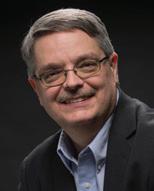
Dedric A. Day (CHE, 2003) shared leadership lessons learned over the course of his career on campus in a presentation as part of the Swearingen Leadership Series. The senior director of human relations strategic talent partnerships with Eli Lilly and Company offered six key lessons to students as they entered their careers: Be aware of what surprises you; Learn from every source——good or bad; Be humble; control what you can control; quantify results; and remember what is important. The Swearingen Leadership Series, bringing speakers to campus to encourage development of future leaders in STEM, was established through support from John S. Swearingen (BSCHE, 1981/HDENG, 2024) and his wife, Anne.
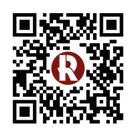

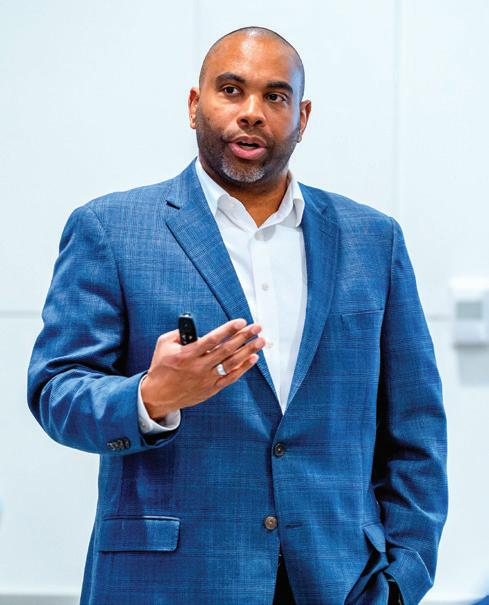
Sailing the clear blue skies has J. Larry Elkin (BSME, 1991/MSME, 1993) navigating the BluePRINT Racing team to first-place honors among its class in the Southern Ocean Racing Conference’s prestigious Nassau Cup Regatta, a race covering 170 nautical miles from the entrance of Miami Habor to Bahamas’ Nassau Harbor. This came after finishing second in races this racing season from Fort Lauderdale to Key West, Miami to Palm Beach, and a circular course near Fort Lauderdale. “Yacht racing gives me the enjoyment of being part of a team. I love the physical challenge, and it motivates me to stay in excellent condition. However, I absolutely love applying my engineering skills,” he says. When back on shore, Elkin owns two consulting firms. Elkin Engineering & Diagnostics is a forensic mechanical and structural engineering company located in Charleston, South Carolina. Meanwhile, ABS Environmental provides indoor air quality consulting services primarily associated with asbestos, lead, mold, and volatile organic compounds.
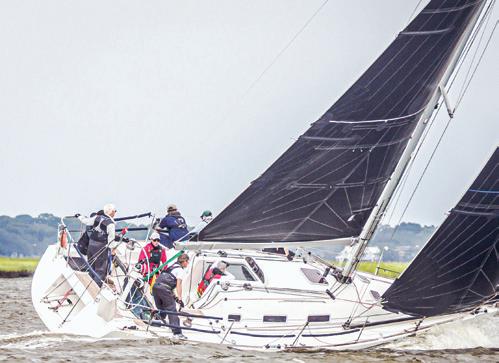
Learn more about Larry’s yachting adventures at bit.ly/rhit-elkin

Chester (Chet) J. Dominik (ME, 1988) has joined HKA’s forensic accounting and commercial damages practice team in Chicago. He specializes in commercial damages and intellectual property legal cases and most recently led teams preparing expert reports and expert witness testimony for federal district courts and the International Trade Commission.
Anthony L. Phillips (CS, 1988) retired after 26 years as an information technology project manager with Kansas State University.
Kenneth W. Roberts (ME, 1988) has been elected secretary/treasurer with the National Kitchen & Bath Association. He is president with Atlas Roofing Company.
Todd A. Cartwright (ME, 1989) has joined Nel Hydrogen as chief commercial officer, bringing more than 30 years of energy sector experience to the global green hydrogen electrolysis company. He has had key leadership roles with CB&I and Technip Energies.
Jeffrey A. Harrison (EE, 1989) is among Indianapolis business and community leaders planning festivities in the city for the WNBA 2025 All-Star Weekend (July 18-19).
John E. Ball (EE, 1990) is senior vice president and general manager of ServiceNow’s customer and industry workflow products division. He spent nearly 10 years with Salesforce in a variety of leadership roles.
Col. Kevin R. Fesler (ME, 1990) has transitioned to the role of chief customer officer with Red 6 after serving as the technology company’s chief revenue officer since 2021.
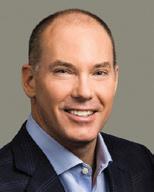
Bill E. Hendricks (CHE, 1990) is president of Cognite Americas, a Houston-based company bringing artificial intelligence-powered industrial software solutions for manufacturing. He formerly was the firm’s vice president of sales–part of more than 30 years of industry experience.

Todd A. Brown (CHE, 1991) is vice president of operations with ICP Group’s roofing and driveway sealers business unit. He has more than 34 years of experience in chemical manufacturing with Air Liquide Advanced Materials and The Dow Chemical Company.
Few inventors have been as prolific or as impactful to the field of surgical instrument technology as David C. Yates (EE, 1984). His impressive 530-patent portfolio (with nearly 80 others pending review) ranks 134th among inventors within the United States and 215th worldwide, and is a mark achieved by less than 5% of all living global inventors. Currently, only seven other inventors have had their patents cited more as being relevant to others’ inventions. Also, Patent Vector has valued Yates’ innovations at more than $2.5 billion and at least one of his products launched on the marketplace is helping an estimated four million surgical patients return to health annually. Yates’ groundbreaking inventions over a more than 40-year engineering career have covered such areas as electrosurgery, blood vessel sealing, internal stapling, surgical robotics, electro-mechanics, electro-optics, and circuit design.
Rob C. Hochstetler (EE, 1991) earned his sixth academic degree, a doctorate in organizational leadership from Columbia International University. He is president and chief executive officer with the Central Electric Power Cooperative in South Carolina.
Scott M. Simmons (ME, 1991) is now chair of Barnes & Thornburg’s intellectual property department, leading one of the largest and fastest-growing IP practices in the country. He has been with the law firm since 2004 and is a partner in the Indianapolis office.
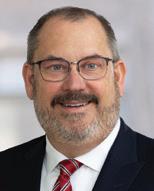
Eric J. Trueblood (CHE, 1992), MD, is a pulmonologist specializing in respiratory illnesses and sleep disorders at Greene County General Hospital in Linton, Indiana. He has been a physician with the Monroe Cardiopulmonary Institute in Bloomington, Indiana.
Jeff L. Papa (ECON, 1993), J.D., was awarded his second Sagamore of the Wabash honor by former Indiana Governor Eric Holcomb (HDENG, 2020) for distinguished service to the state and its residents. He also was named a Distinguished Barrister in The Indiana Lawyer’s 2025 Leadership in Law Awards and received the People

Learn more about David’s patents at bit.ly/3HbTdBq
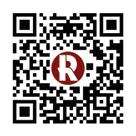
Helping People Network’s 2025 Servant’s Heart Award as an organization ambassador.
Tony H. Cooper (ME, 1995) is senior vice president of sales and applications engineering with Green Cubes, where he has had a variety of leadership roles since 2012.
Duane R. Drake (ME, 1995) is senior director of operations enrollment management and student success with Miami University (Ohio).
Jonathan E. Rich (ME, 1995) is leading Lucid Motors’ body structures engineering team after spending more than 27 years with General Motors in a variety of leadership roles.
Yun Choe (CE, 1996) is teaching mathematics to eighth grade students at the Punahou School, a private college preparatory school in Honolulu, Hawaii. He formerly taught in China.
Robert C. Flaherty (CHE, 1997) is the vice president of product development with ProAmpac, a global flexible packaging company, where he has worked in a variety of leadership roles since 2006.
Brent G. Nemeth (CE, 1998) is an organization director within the Ohio Farm Bureau. He formerly was named Jefferson County (Ohio) Conservation Farmer of the Year for his 75-head seed-stock cow-calf operation.
Ryan M. Schade (CPE, 1998) was spotlighted in TechPoint’s 2025 Tech 25 class of emerging leaders within Indiana’s digital innovation economy. He has spent 25 years in software development, sales, and engineering with SEP.
John W. Weil (EE, 1998) is vice president of Internet of Things and Edge AI Process Business with Synaptics. He formerly was chief marketing officer with Foundries.io.
Isaac D. Adams (MA/ECON, 1999) is vice president of product with Aspire General Insurance Services after being vice president of data science with The Hartford. His career began as an actuarial analyst with Allstate Insurance Company.
Bryan W. Egli (CE, 2000) is president of Thieneman Construction Inc. after serving as the company’s vice president for operations for the past 15 years. He established Thieneman’s Louisville area office and has worked on infrastructure projects throughout the Midwest.
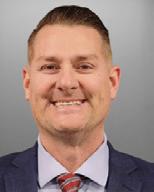
Erika L. (Snyder) Buxton (CHE, 2002) has been elected a Toy Association and Toy Foundation trustee. She is president of Razor USA and formerly was a global leader of several toy brands with Mattel Inc.
Jennifer M. (Meyer) Chagnon (CHE, 2002), J.D., has been elected a director of the Washington, D.C.-based Sterne, Kessler, Goldstein & Fox law firm. She is a member of the firm’s electronics practice group and a former lead
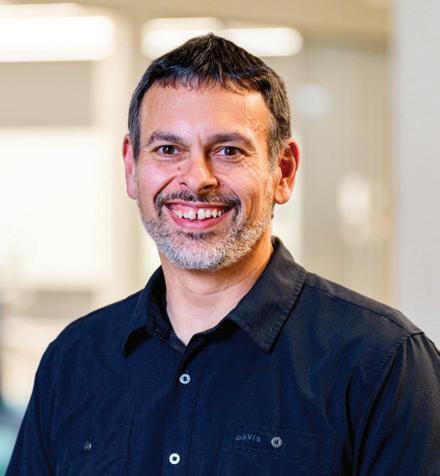
administrative patent judge with the U.S. Patent and Trademark Office’s Patent Trial and Appeal Board.
Travis A. Coy (CHEM, 2002) is executive vice president, chief financial officer, and head of corporate development with Immunocore, a commercialstage biotechnology company. He had nonexecutive roles with the company since 2019 and previously had a variety of laboratory positions with Eli Lilly and Company.

Nathan C. Bottom (CE, 2003) is the city engineer for Springfield, Illinois, leading strategic planning efforts and managing capital improvement projects. He has spent 20 years in a variety of engineering positions with the city.
Bradley A. Woodcox (BSME, 2004/MSBE, 2009) is general manager of EarnUp Inc., a software company based in San Francisco. He has had a variety of leadership positions within the company since 2018.
Ashley L. Bernal (ME, 2006), PhD, has been promoted to professor of mechanical engineering at Rose-Hulman. Eric M. Reyes (MA/ECON, 2006), PhD, has been promoted to professor of mathematics at Rose-Hulman.
Charlie E. Key (CPE, 2007) is bringing his perspectives on artificial intelligence tools for business in a new weekly newsletter, Just a Guy With His AI. He is Losant’s co-founder and chief executive officer.
Daniel F. Brunner (EP, 2008) has started Future Tech Partners, a consulting firm helping others turn science fiction into reality. He is helping technologists get
early-stage deep tech ideas off the ground as a fractional chief technology officer while also advising investors on potential investments into the deep tech space.
Ryan J. Jackson (EE, 2008) is executive director of corporate strategy and strategic projects with CMS Energy.
Nate P. Richter (ME, 2009) is senior vice president of North America sales with Packsize after joining the packaging and container manufacturing company in January.
Annie (Yoder) Bullock (BE, 2010), JD, received the Navy Civilian Service Achievement Medal for leading Naval Surface Warfare Center-Crane, Indiana’s annual Naval Innovative Science and Engineering Technical Exchange Meeting. She leads the partnerships and special projects division within NSWC-Crane’s Joint Hypersonics Transition Office.
Robert J. Williamson (AB/SE, 2010), PhD, has been promoted to associate professor of biology & biomedical engineering and computer science & software engineering, with tenure, at Rose-Hulman.
Chris M. Wlezien (ME, 2010) has launched Eureka Partners, a product design and engineering services group. He also continues to collaborate with McKinsey & Company as an external expert advisor.
Nathan B. Elder (CHE, 2011) is the director of business development with Rose-Hulman Ventures. He has extensive experience in technical sales, business growth, and manufacturing procedures.
Three decades after its founding by four alumni, the SEP software product design and development firm has been named TechPoint’s 2025 Exceptional Employer of the Year and the Top Midsize Employer among the 2025 Best Places to Work in Indiana. Both honored the employee-owned company for developing and enriching skills-based STEM talent, cultivating a strong workplace culture, and impacting the community in positive ways. Those guiding principles were established by co-founders
Jeff S. Gilbert (ME, 1985), Tony W. Montgomery (CS, 1986), Tim R. Shoemaker (CS, 1986), and Mike A. Fouch (EE, 1986). Today, the Carmel-based company is being led by President and Chief Executive Officer Raman N. Ohri (CPE, 1993). Other key alumni include Director of Software Engineering Jon C. Fuller (CPE, 2004), Director of Security and Operations Paul A. Pringle (CS, 1986), Director of Talent Acquisition and Onboarding Kyle L. Pinches (CPE, 1999), and Delivery Lead Bradley A. Snodgrass (CS/EE, 1987). There are nearly another 50 alumni in a variety of lead roles in software development, client engagement, and project testing and quality control.

Learn more about the SEP alumni team at bit.ly/4kNzdUt
Molly C. (Gillam) Hardebeck (AB, 2011), PhD, earned the 2025 Jess Lucas Alumni Leadership Award for career success as a former Rose-Hulman residence life staff member. She is a clinical research scientist with Eli Lilly and Company, helping evaluate new medicines that will make life better for cancer patients throughout the world.
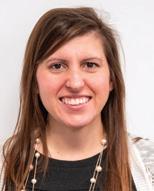
Keegan C. Superville (BE, 2011) is vice president with PurpleLab after two and a half years as director of product marketing with Komodo Health and seven years in a variety of role with TriMed.
Victoria C. Zheng (CS/SE, 2013) is in a key leadership role with Inkeverse Group, a China-based mobile live broadcast platform business. She formerly directed multiple technical teams with Robinhood, IXL Learning, and Coursera.
Kira M. (Boswell) Buell (ME, 2014) is the engineering manager of thermal systems design with GE Aerospace, where she has worked since 2021.
Lauren A. (Meadows) Willingham (BSBE, 2014/MSEMGT, 2015) is director of new business stabilization with TRIMEDX, where she has worked since graduation.
Heather N. Buker (BSCPE, 2014/MSEMGT, 2015), PhD, was named one of the top 25 Women Chief Customer Officers of 2024 by the Women We Admire organization. She specializes in cybersecurity software development with 6clicks.
Kyle D. Washburn (PH, 2017) has been promoted to director of residence life at his alma mater, replacing Cory J. Pardiek (BSBE, 2014/MSEMGT, 2016), who is now a project manager with Lab Interiors.
Justin M. Velasquez (BE, 2018) is an area sales manager with IMA Group after being a sales engineer with Sheffer Corporation for six years.
Noah E. Forsythe (ME, 2019) received the Future Technology Leader Award from California’s Engineers’ Council in recognition of his technical excellence in the field of aerothermal and fluid system modeling while supporting a multiple of engine and energy programs with Aerojet Rocketdyne.
Landon C. Bundy (MA, 2022) is director of sports information and promotions at the University of Chicago after spending 2 1 /2 years as an assistant director in the same roles with his alma mater.
Ayden F. Ayres (ME, 2024), Ethan N. Rogers (ME, 2024), and Liam T. Waterbury (SE, 2024) were featured in the Indianapolis Business Journal’s 2025 Innovation Issue for their StrapTech startup, which has developed a patent-pending wireless device that enables semitruck drivers to monitor the tension in their cargo straps in real time.
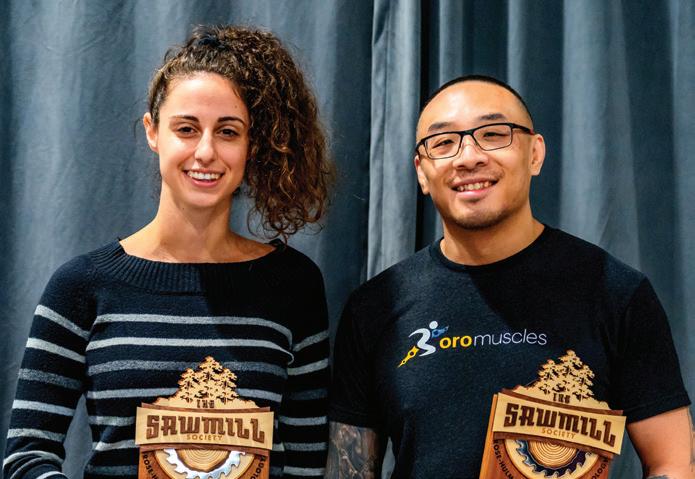
An entrepreneurial enterprise developed to help coaches and clinicians throughout the world achieve maximum performance from their athletes and patients has brought career and personal success for Tanya A. Colonna (BSBE/BCMB, 2013; MSEMGT, 2015) and Hobey Tam (BE/BCMB, 2012). The duo behind the Oro Muscles startup received Rose-Hulman’s 2025 Tom Mason Innovation Award, honoring ventures, founded or led by students and alumni, whose innovation and social desirability are bringing distinction and admiration to alumni, their startup, and Rose-Hulman. Conceived by Colonna and Tam less than a decade after graduating from Rose-Hulman, Oro Muscles is using Artificial Intelligence technology to instantly provide a reliable, repeatable, valid, and actionable display of muscle data. This instant display is setting the pace for muscle data analysis and transforming how previously complex raw personal training data can be turned into actionable insights that enhance decision-making confidence for athletes, coaches, athletic trainers, and medical professionals. The company’s first product was launched in late 2024 and is now collaborating with leading physiotherapists from international soccer, Major League Baseball, and Olympic teams, and global rehabilitation facilities.
Learn more about Tanya and Hobey’s startup activities at bit.ly/4mjaNDU


Austin D. Tyler (ME, 2016) married Sarah C. Walker (EE, 2017) on August 8, 2021, in Hamilton, Ohio. They live in Loveland, Ohio. Austin is a design engineer with GE Aerospace and Sarah is a radio-frequency engineer with Northrop Grumman.

Jan E. Mangawang (ME, 2019) and Collin Walter were married on September 21, 2024, in Rocklin, California. They live in Roseville, California, where Jan is a senior industrial engineer with Target Corporation’s food supply chain.

Michael J. Laritz (BE, 2016) married Marissa Leitma on December 18, 2021, in Ijamsville, Maryland. They now live in Brunswick, Maryland. He is a systems engineer with Meso Scale Diagnostics.

Daniel A. Verlaque (SE, 2018) and Jaclyn B. Setina (BE, 2018) were married on August 24, 2024, at the Morton Arboretum in the Chicago suburbs. They live in Boston, where Daniel is an engineer with Google and Jaclyn is a supply chain manager with Merus.
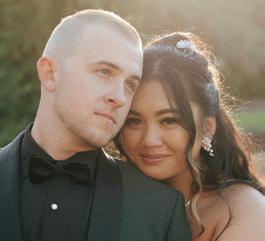
Evan W. Sellers (CSSE, 2024) and Reilly E. Foote (ME, 2024) were married on July 20, 2024, in the White Chapel on campus. They live in Zionsville, Indiana, where Evan works with SEP and Reilly works with TIC.
Ryan J. Mendonca (ME, 2009) and wife, Danielle, had a daughter, Della Ruth Michel, on October 13, 2024.

Morgan R. (Anderer) Clapp (CE, 2015) and husband, Todd A. Clapp (CE 2015), had their first child, son Ian, on October 8, 2024. They live in Highlands Ranch, Colorado, where Morgan is a project manager with Baseline Engineering and Todd is a project manager with Martin/Martin Consulting Engineering.
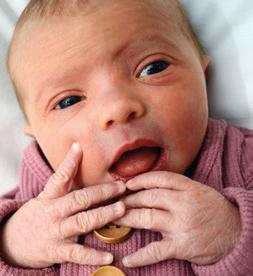
Kate (Kasch) R. Schulstad (CE, 2018) and husband, Matthew P. Schulstad (ME, 2017), had their second child, Cora, on February 27, 2025. The family lives in Algonquin, Illinois. Kate is a project engineer and an associate with Hampton Lenzini and Renwick while Matt is a senior project engineering with Collins Aerospace.
Katrina R. (Yoder) McCullough (EE, 2014) and husband, Wesley R. McCullough (EE, 2014), welcomed their sixth child, son Philip, on January 8, 2025. Philip joins three older brothers and two older sisters. Wesley is a principal systems engineer at Collins Aerospace. Katrina homeschools the children. The family lives in Cedar Rapids, Iowa.

Michael J. Laritz (BE, 2016) and wife, Marissa, had their first child, daughter Esther, on October 4, 2024, in Frederick, Maryland. Michael is a principal software engineer with Meso Scale Diagnostics.

Robert E. Bright (BSCHE, 1957/HDENG, 2001), 89, died January 21, 2025, in Austin, Texas, and was featured in a memorial service in the city on May 3. He was a devoted alum and former student-athlete, giving back to the Institute as a member of the Board of Trustees since 1991, Chairman of the Board from 2005-09, and Interim President during the 2005-06 school year. A Texas Roundup-themed campus celebration honored Bob and his devoted wife, Shirley, for their service during that critical year. As a student, Bright was a four-year varsity basketball team member, being co-captain of the 1957 team, and earned class academic honors for three years. He also was treasurer of the Lambda Chi Alpha fraternity chapter, officer in the Tau Beta Pi honor society, and member of several student organizations. After graduation Bright spent more than 30 years with the 3M Corporation, retiring as vice president of manufacturing.
Hal C. Cultice (ME, 1948), 97, died January 22, 2025, in Indianapolis. He worked 41 years with Northen Indiana Public Service Company, retiring as Wabash Valley district manager. Survivors include his son, Robert E. Cultice (ME, 1978).
Jack J. Ellis (ME, 1948) died December 10, 2024, in Chesterfield, Missouri. He spent his career with Peabody Coal Company and had a consulting business, J & I Engineering.
Arlen R. Elliott (CHE, 1949), 96, died November 7, 2024, in Muscatine, Iowa. He retired as vice president of commodities with the Grain Processing Corporation, where he had a 40-year career.
Thomas U. Grinslade (CE, 1952), 94, died March 23, 2025, in Indianapolis. He owned Grinslade Homes for 45 years and was a former president of the Builders Association of Greater Indianapolis.
Donald M. Lewis (ME, 1955), 91, died December 18, 2024, in Hudson, Wis. He retired after earning several patents for new manufacturing process technologies.
J. Dudley Binford (ME, 1956), 90, died January 24, 2025, in Richmond, Indiana. He retired as a mechanical engineer with Dana Corporation, where he several patents.
Bill Povlin (ME, 1956), 95, died January 19, 2025, in Farragut, Tennessee. He retired after nearly 40 years with the DuPont Company.
Earl T. Reichert (ME, 1957), J.D., 88, died December 6, 2025, in Terre Haute. He worked in patent law with the U.S. Patent and Trademark Office, Xerox Corporation, and U. S. Army, being deputy chief of the Office of the Judge Advocate General’s intellectual property law division.
Ernest W. Boodt (CE, 1958), 88, died March 21, 2025, in Scottsdale, Arizona. His career featured being executive vice president of Universal Tank and Iron Works, a residential land developer, and a retail store owner. Survivors included David Boodt (CE, 1981).
James A. Beck (CE, 1961), 85, died December 17, 2024, in Topeka, Kansas. He retired after working in private and public sectors across Kansas, Iowa, and Indiana.
James K. Gates (MA, 1961), 85, died January 25, 2025, in Innsbrook, Missouri. His career as an aerospace engineer included working on the first lunar module and retiring as vice president of advanced programs with The Boeing Company.
Edward J. Kostra (ME, 1961), 87, died April 8, 2025, in Streamwood, Illinois. He retired after a career as a project manager with Raytheon Technologies Corporation.
John V. White (MA, 1961), PhD, 85, died December 21, 2024, in Manassas, Va. He had engineering positions with Pratt Whitney, Computer Sciences Corporation, and The Analytical Sciences Corporation.
Paul F. Richardson (CHE, 1963), 83, died February 25, 2025, in Indianapolis. He spent more than 30 years in a variety of positions with DuPont. He retired in 1992.
Roger D. Long (ME, 1965), 81, died on April 24, 2025, in Indianapolis. He retired after 45 years as a sales engineer and partner with Frank W. Gill and Associates.
Gib M. Bosworth (ME, 1966), 81, died January 8, 2025, in Queen Creek, Arizona. He retired after a 30-year career as a sales engineer with General Electric Company, earning GE Power Systems’ Salesman of the Year honors in 2001.
Earl T. Sutter II (CE, 1966), 82, died December 8, 2024, in Falls Church, Virginia. He had a successful career in construction management and consulting, including forming ETS Advisors.
Robert R. Uhlmansiek (EE, 1968), DDS, 78, died January 15, 2025, in Camano Island, Washington. He had a dentistry practice in Lake Forest Park, Washington, for several years and was a part-time faculty member with the University of Washington School of Dentistry, where he earned a degree in 1975.
Russell V. Rouse (ME, 1969), 77, died November 17, 2024, in Oxford, Georgia. He retired as director of engineering with Acuity/Lithonia Lighting after also working with Roper Technologies, FMC Corporation, and Snapper Inc.
Arthur C. Rugg (ME, 1972), 74, died October 5, 2024, in Indianapolis. He retired after more than 30 years working as an engineer
and sales representative with Royal Die and Stamping Company.
James W. Hayes (CHE, 1973), 73, died May 1, 2024, in Mukwonago, Wisconsin.
Michael J. Hileman (CHE, 1975), 72, died January 16, 2025, in McKinney, Texas. He was a consultant with Solomon Associates and an engineer with Atlantic Richfield, Charter Oil, and Champlin Petroleum.
Larry R. Vaughan (CE, 1975), 71, died November 29, 2024, in Greencastle, Indiana, his hometown. He was a maintenance director with the Indiana Department of Transportation for 42 years.
Gregory C. Bettice (EE, 1976), 70, died November 15, 2024, in Melbourne, Florida. He retired as an engineer with the Harris Corporation and was actively involved in the local chapter of the Institute of Electrical and Electronics Engineers.
Charles K. Rogers (EE, 1977), 70, died May 3, 2025, in New Palestine, Indiana. He started his nearly 44-year career with Naval Avionics and later retired as an engineer with Raytheon.
Randy D. Butcher (CHE, 1979), 68, died November 16, 2024, in Robinson, Illinois. He was an engineer with Marathon Petroleum for 30 years.
Mark A. Fleck (ME, 1979), 67, died March 22, 2025, in Apple Valley, Minnesota. He was a market development manager with Avure Technologies.
Dennis A. Grannan (ME, 1979), 67, died February 10, 2025, in Williamsburg, Virginia. He retired as a business consultant after being an executive with General Electric and Square D companies.
Daniel W. Risner (ME, 1979), 67, died December 12, 2024, in Mishawaka, Indiana. He spent 39 years working in the automotive industry.
Randell J. Vaal (CHE, 1979), 67, died November 17, 2024, in Santa Claus, Indiana. He retired after 25 years as a software developer and manager with Schlumberger Limited.
Chris A. Greenwood (CE, 1981), 67, died February 6, 2025, in Brazil, Indiana. He retired as an engineer with Great Dane after working in a variety of jobs with companies in Indiana and Ohio.
Michael G. Howe (ME, 1982), 64, died January 8, 2025, in Columbus, Ind. He was a senior

management engineer with Belcan Engineering Group.
J. Kevin Kaufman (CHE, 1987), MD, 60, died March 2, 2025, in Fort Worth, Texas. He was a neurosurgeon in Fort Worth, had several patented neurosurgical instruments, was featured in multiple medical journals, and was a speaker at international conferences for his excellence in surgical techniques.
Allen W. Snyder (MA/CS, 1987), 59, died December 20, 2024, in Hanover, Maryland. He retired after working with the National Security Agency.
Richard J. Wilhelm (CE, 1991), 55, died May 3, 2025, in Indianapolis. He owned J. Dwight Thompson Company, a water treatment business that combined his technical expertise and dedication to serving others.
Phillip A. Bailey (ME, 1996), 52, died December 24, 2024, in Merrillville, Indiana. He specialized in pump technology with Hoosier Energy, Marathon Petroleum, Country Mark, and British Petroleum.
Rob D. Andrews (EE, 2014), 33, died February 20, 2025, in Dillon, Colorado. He owned the Relief Outpost Massage Studio in Colorado.
Susan M. Garry, 86, died January 17, 2025, in Terre Haute. She enjoyed serving students as a residence hall custodian from 1996-2020.
Peter F.H. Priest, 91, PhD, died April 13, 2025, in Terre Haute. He was a professor of Russian language for 36 years, developed the Russian Language Technical Translator Program, and led several student trips to Russia.
Phyllis J. Proctor, 88, died April 14, 2025, in Terre Haute. She was an administrative assistant to the controller for 20 years.
Rick Shaw, 67, died February 15, 2025, in Plainfield, Indiana. He was the head athletic trainer from 1988-93.





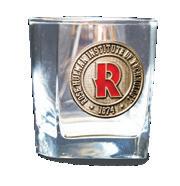
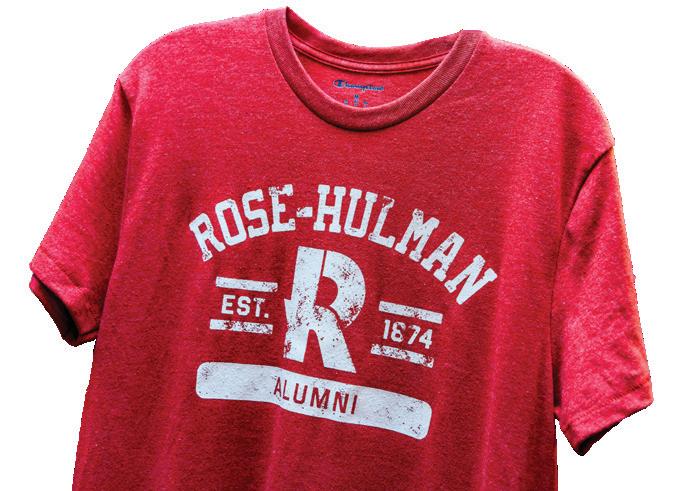

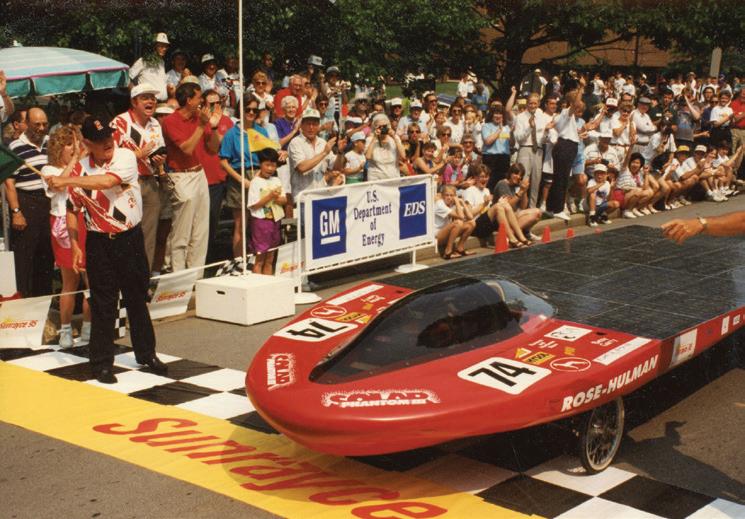
Long before electric vehicles began covering America’s transportation landscape, teams of innovative Rose-Hulman students created solar-powered cars that pushed the limits of automotive technology and crisscrossed the country— all the while helping affirm the Institute’s growing reputation among the nation’s top engineering colleges and universities.
From 1990 through 2001, the Solar Phantom race team spent most of the summer basking in the sunshine while competing for top honors in the biennial Sunrayce/American Solar Challenge road races, two Formula Sun Grand Prix events, an east coast road rally, and a Solar 300 competition. The car also participated in pre-race festivities in front of more than 300,000 spectators at the Indianapolis 500 race.
Rose-Hulman’s team had seven top 10 finishes in these events and upon many occasions finished ahead of teams from such prestigious institutions as Massachusetts Institute of
institutions as Massachusetts Institute of Technology, Stanford University, University of Michigan, and Ohio State University.
Also, Sunrayce’s Indianapolis-to-Colorado route in 1995 and 1997 had its first overnight stop on the Rose-Hulman, attracting thousands of visitors and race officials to campus and lining Wabash Valley highways to cheer for the hometown team and get a glimpse of the futuristiclooking vehicles.
All of this was the idea of an ambitious group of engineering students who convinced skeptical Institute administrators to accept the challenge of designing and building a solar car from scratch materials to compete in the General Motors-sponsored GM Sunrayce USA, an 1,800-mile race from Orlando to Warren, Michigan, over the course of 11 days in July of 1990.
99 race from Washington, D.C., to Orlando; and the Solar Phantom I (right) crosses the finish line of a race.
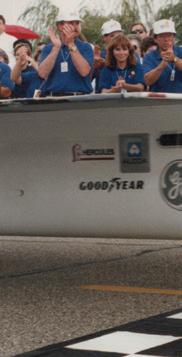

“Working with a team of people to take a concept from paper, to see it become an actual product, and then to see it out driving on the road at 55 mph was a great culmination to an engineering education,” states Ken Whitehead (EE, 1990), who joined Mike Thoeny (EE, 1989) and Ron Szabo (CS/EE, 1989) in writing the original project proposal that was accepted by GM officials.
Each Sunrayce event was a series of nine to 11-day mapped race segments, with a mid-day checkpoint. The race winner was the team completing the entire race in the shortest amount of time.
The original Solar Phantom car had an aerodynamically sleek and lightweight white carbon fiber-based body with energy being collected from more than 700 solar cells on the roof. Construction was an all-out effort by team members, with final preparations requiring an all-night session in a Florida hotel parking lot. An internal equipment fire early in the race required team members to rewire the car’s entire electrical system. The team overcame that early setback to finish 20th out of 32 competitors.
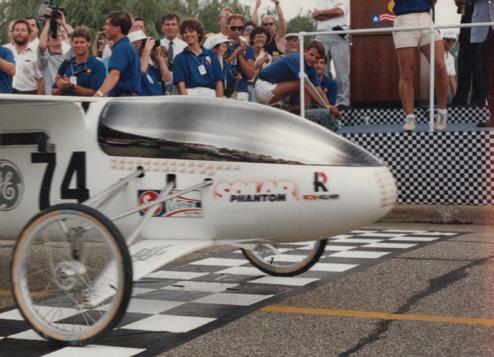

“When everything worked, we had a car that performed quite well. The team had really done its homework on designing a quality car. Other teams and fans took notice. That was really satisfying for us,” notes John Buetow (EE/AO, 1990).
A new, improved, red-colored Solar Phantom II and III was more competitive in its two journeys, crossing the finish line fifth in the 1997 race. Effective race strategy and course familiarity helped the team pass Michigan’s car in the final quarter mile of the first-day race segment from Indianapolis to the Rose-Hulman campus.
“We took advantage of a home field advantage with familiarity of a stoplight near campus. While Michigan was stopped in traffic, we timed it perfectly, sped right past them, and beat them to campus,” recalls Solar Phantom driver Grant Carpenter (ME, 1999). “We had taken many test drives through that patch of highway and were very familiar with that stoplight. We knew when the light was going to change.”
Wes Hamilton (ME, 1996) adds, “The whole experience of participating in a cross country race was unforgettable. Meeting so many people, seeing so many new places, and living out of a van for nearly two weeks. It all adds up to a singular experience unlike any other.”
Lessons learned during three years on the Solar Phantom team inspired Greg Hubbard (ME, 1994) to bring innovation to GM through electric and hybrid-electric propulsion systems. He has spent most of his career working in dynamics, control systems, and software, and helped lead in the development of several electric and hybrid vehicles for the company.
“At GM, as we have been expanding our propulsion system controls from internal combustion engine-based to hybrid to electric vehicles and beyond, there are clear lines of inspiration for me personally as well as our team to those Solar Phantom roots——not only in the specific learnings (failure rates and reliability along with optimal energy strategy) but also the team spirit and the innovation mindset,” he notes.
Carl Brown (EE, 1995) turned involvement as the Solar Phantom III’s chief electrical engineer into a career developing production automotive battery packs for hybrid and electric vehicles, along with focusing on battery management systems.
“I cherish the mission, the camaraderie, and the drive to making it all happen,” he says. “Before the last day of Sunrace 95 (completed in all-day rain conditions), many competitors plugged in and took the recharging penalty, just to be able to cruise in through the finish line. We kept true to only using the sun to charge, and I am proud of that.”
Jerry Zdenek (EE, 1995) is still reusing the serial driver queueing code he wrote for the Solar Phantom III’s telemetry system. Jeremy Schoen (BSEE, 1999/MSEMGT, 2004), PhD, showcases the Solar Phantom V’s self-made steering wheel (winning Sunrayce 99’s Innovation in Design Award) as a prop when discussing the advantages of self-guided teams in the organizational leadership class he teaches as an assistant professor of decision sciences and management at Tennessee Technological University’s College of Business. Solar Phantom IV team leader/chief mechanical engineer Jonathan Rich (ME, 1995) spent 27 years in
leadership roles with GM and is now senior manager for body structures with Lucid Motors. Hamilton is the hybrid systems and controls engineering manager at Allison Transmission, working with high-voltage batteries, inverters, DC-DC converters, and motors.
“Reflecting on everything (involving the Solar Phantom experience), I realize that I love projects. I never cared much about homework, but I thrive on building things,” remarks former driver Jim Meyer (MA, 1999), director of digital product with SRAM, a bicycle component manufacturer.
“Solar Phantom wasn’t just about the car—it was about having a goal, working toward it, and then testing it in the real world. The race gave it stakes; it wasn’t just theoretical … That sense of purpose is what gets me out of bed in the morning. Solar Phantom captured all of that. It shaped what I love to do, and I still chase that same experience in my career today.” n
Several Solar Phantom team alumni have gone onto successful careers within the automotive industry and other fields:
Ken Whitehead (EE, 1990): Retired Senior Vice President, Global Supply Chain and Global Operational Excellence, Eli Lilly
Michael Thoeny (EE, 1989): President, Flex Automotive
Greg Hubbard (ME, 1994): Director of Vehicle Mechatronics Embedded Controls, General Motors
Ryan Kingsbury (EE/CPE, 2004): Co-founder/Chief Technology Officer, Blue Cubed aerospace company
John Buetow (EE/AO, 1990): President/CEO, Buck Research Instruments
Carl Brown (EE, 1995): Vice President/General Manager, Dukosi Battery Development Company
Jim Meyer (MA, 1999): Director of Digital Product, SRAM bicycle component manufacturer
Eric Ward (ME, 1998): Senior Technical Specialist, Honda
Wes Hamilton (ME, 1996): Hybrid Systems and Controls Engineering Manager, Allison Transmission
Grant Carpenter (ME, 1999): Senior Technical Specialist, Honda
Alan Manche (EE, 1991): Vice President External Affairs, Schneider Electric
Jonathan Rich (ME, 1995): Senior Manager-Body Structures, Lucid Motors/ Former Director with GM
Jeremy Schoen (BSEE, 1999/MSEMGT, 2004), PhD: Assistant Professor of Decision Sciences and Management, Tennessee Technological University


